
A University College London, Bartlett UCL Project
In collaboration wth Osaka University
Funded by The Great Britain Sasakawa Foundation
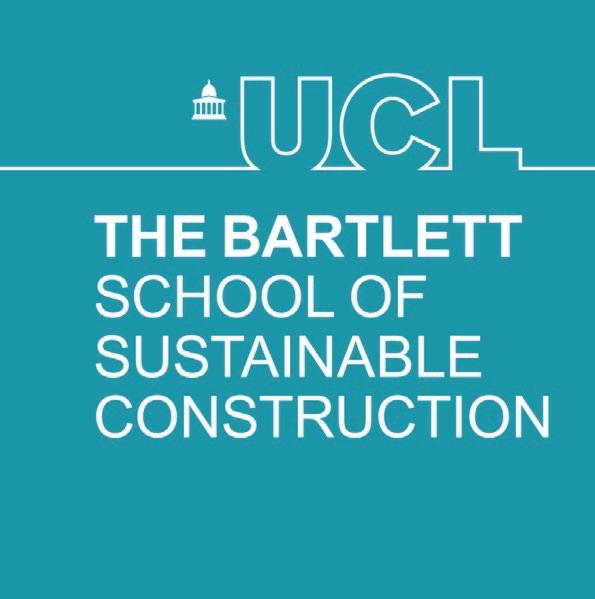
In Collaboration with

by Supported by

3
5


A University College London, Bartlett UCL Project
In collaboration wth Osaka University
Funded by The Great Britain Sasakawa Foundation

In Collaboration with

by Supported by

3
5
Foreword 序文
Dr Evangelia Chrysikou
New UK-Japan Alliance in Academia 学界の新しい英日同盟
Professor Shin-ichi Ohnuma
8 The International Academic Forum 国際学術フォーラム
Dr Joseph Haldane
11
A Small Tribute to the UK-Japan 2000 Group 日英2000年委員会へのささやかな賛辞
Professor Haruko Satoh
12 What is Aging? 老化とは
Professor Chariklia Tziraki
13 Perspectives on Aging 老化に対する考え方
Dr James McNally
14 The "Telenoid" Dialogue Robot 対話ロボット「テレノイド」
Professor Hiroshi Ishiguro
15 Ageing Futures 老齢化の未来
Professor Paul Higgs
16 Design shall not wither them… 設計のせいで人々を困らせてはならない…
Professor Nick Tyler CBE
17 Why successful ageing needs innovation in the built environment
高齢化社会を成功させるために構築環境の革 新が必要な理由
Professor James Barlow
18 Aging Healthily and Happily 健康的に楽しく歳を重ねること
Professor Tsuyoshi Sekitani
19 Ageing Research in Greece 老化に関する研究
Professor Christos Lionis
20 Active Ageing アクティブな老化
Professor Dimitrios Buhalis
21 Never too old to learn is a cliché 学習するのに遅すぎることはない Willeke van Staalduinen
22 Smart Healthy Age-Friendly Environments スマートで健康な年齢にやさしい環境
Carina Dantas
23 Reflection on Ageing 老齢化についての考察
Dr Yilin Song
24 Reflections, or How I see “Ageing” 振り返り:私の「老化」に対する見方
Dr Cihangir Istek
25 Planning Age-friendly Cities 高齢者に優しい 都市
Dr Eleni Tracada
26 Responsible Care for Older Adults through Robotic Media ロボットメディアによる高齢者のケア
Dr Ryuji Yamazaki-Skov
27 My Research 私の研究
Dr Isaiah Durosaiye
28 Cultural Heritage & Human Wellbeing 文化遺産と人間福祉
Dr Christina Malathouni
29 Self-autonomy and Dignity 自律性と尊厳
Dr Lusi Morhayim
30 Tacit knowledge of the vulnerable as a driver for design for health & wellbeing 健康と福 祉を 設計する推進力としては弱い、無意識的共有意識
Dr Jonas Rehn
31 The Highest Quality of Life 最高の生活の質
Dr Yukiko Kuboshima
32 The Role of Built Environment and Physical Activity on Successful and Active Ageing 上手に、そしてアクティブに年を重ねるための 構築環境と身体活動の役割
Dr Artur Marc Hernández
33 Ageing with Multimorbidity: Articulating Healthcare Through Home Environments 多発性老化:家庭環境を通じた医療の明確化
Eva Hernandez Garcia
34 Smart Hospital Design in China 中国のスマートな病院設計開発 Jianqiu Chen
35 ‘Living’ Ageing 老化の生々しい過程 Eleftheria Savvopoulou
Project Principal Investigator
プロジェクトの主任研究員
In the space of this booklet we gathered some of the world's greatest minds together with the next generation of researchers to approach aspects related to ageing. From my experience with policy in Europe and ageing research, we expect that technology will provide easy, scalable solutions. Yet, buildings – old and most of the times new – remain stereotypically as they were: difficult for those who are old and for those who are ill.
Together with Dr Joseph Haldane, and with the support of the Great Britain Sasakawa Foundation, we set out to explore what research is available that we should be aware of, and to bring experts together from East to West. Our compass was what we knew, for me the Built Environment in relation to health, and for both of us the bridging of disciplines. The outcome was a series of meetings with inspirational thinkers. Whilst attending The IAFOR Asian Conference on Gerontology in Kobe, I visited Osaka University where I was thrilled to discover colleagues that were also looking at the Built Environment and Vulnerability – we had so much in common.
We managed to bring some of our Eastern colleagues to University College London (UCL) to exchange ideas and possibilities. We also brought the IAFOR Conference on Gerontology all the way to the Bartlett School of Architecture in London. With a cherry-picked and very passionate audience we traveled East and West; we covered everything from society to the individual, from leisure to deprivation, and from AI to old-fashioned bricks and mortar. Our aim was to rethink ageing research with an emphasis on the Built Environment. We ended up with a group dedicated in that field, scholars that we intend to keep close. Most of those people have contributed in the following pages. We asked them to write something representing their work that you should be aware of. The rest are still close and collaborate through different streams and platforms. One thing became clear, despite the pandemic that followed, the momentum was not lost.
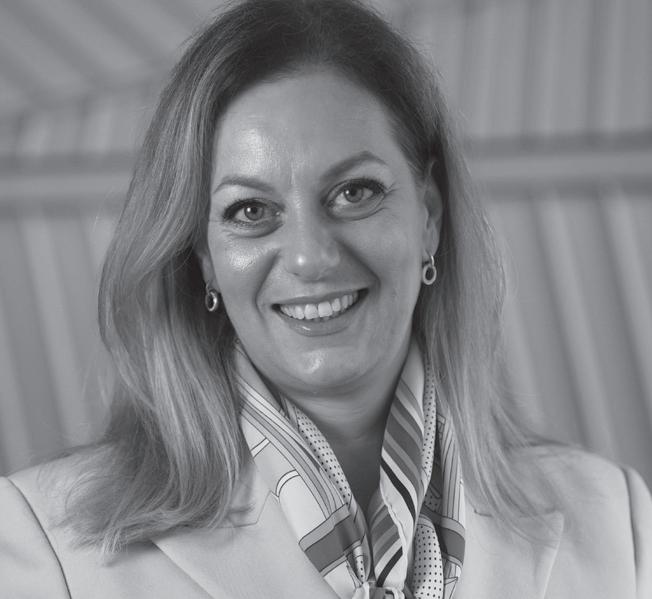
本小冊子では、世界最高峰の知性の持ち主と、次世代の 研究者を集め、高齢化にかかわる面にアプローチした。 欧州における政策と高齢化研究の分野での私の経験か ら、テクノロジーが手軽で、拡張性のあるソリューション をもたらしてくれると私たちは期待している。とはいえ、 建物 - 古いものや、大抵の場合は新しいもの – は型どお りのまま変わっておらず、高齢者や疾病のある人には使 いづらい。
Dr Joseph Haldaneと共同で、グレイトブリテン・ササカ ワ財団の支援を受け、私たちが知っておくべき研究には どのようなものがあるかを調べるとともに、洋の東西を 問わず世界中から専門家を集めることに着手した。私た ちの羅針盤となったのは私たちの知っていること、私にと っては健康に関連した建造環境、私たち二人にとっては 学問分野間の架け橋だ。その結果、インスピレーション を刺激する思想家らに会い、話を聞くことができた。 神 戸で開催されたIAFORアジアエージング・老年学国際 会議に出席した際、大阪大学を訪問し、同じように建造 環境と脆弱性(バルナラビリティ)に着目している同僚ら がいることを知り感激した - 私たちには非常に多くの共 通点があった。
私たちは東洋の同僚の何人かをユニバーシティ・カレッ ジ・ロンドン(UCL)に招き、アイデアと可能性を交換し た。また、IAFORの エージング・老年学国際会議のロン ドンBartlett School of Architectureでの開催も実 現した。厳選した、非常に熱心な 聴衆とともに洋の東西 を問わず世界中を旅し、社会から個人、レジャーから貧 困、AIから旧式の家屋まで、あらゆるものを網羅した。私 たちの目的は、建造環境に重点を置き、高齢化研究を見 つめ直すことであった。私たちは最終的に当該分野に特 化したグループとなった。このグループの学者らとは今後 も緊密な関係を保ちたいと考えている。これらの人々の 多くは寄稿してくれ、その文を本文書に掲載した。自らが 取り組み、皆さんに知っていただきたい研究内容を紹介 するものを書いてほしいと私たちが依頼した。ほかのメン バーとも依然として親しくしており、さまざまなストリー ムやプラットフォームを通して協業している。その後に起 きたパンデミックにもかかわらず、明らかになったことが 一つある。その勢いは失われていないということだ。
UCL Japan Ambassador at the UCL Global Engagement Office
UCLグローバル・エンゲージメントオフィス
UCLジャパンアンバサダー
We have many global issues that must be solved through international collaboration. The UN has set 17 sustainable development goals (SDGs), which provide the blueprint to achieve a better and more sustainable future. To achieve this, international collaboration in academia is crucial. The roles of universities in these collaborations are significantly expanding.
In the past, Japanese students who studied at UCL around 150 years ago provided a significant contribution to the interaction between the UK and Japan. In 1902, British and Japanese governments established the Anglo-Japanese Alliance. Tadasu Hayashi, who was one of the first Japanese students to study at UCL and eventually became the first Japanese Ambassador to the London and foreign minister, contributed to this alliance.
This alliance helped Japan to become one of the world’s major powers. As a result, Japanese politics, diplomacy and industry began to advance rapidly, improving the role of Japan in international society. In the Meiji Period (1867-1912), more than 30,000 Japanese students studied at British universities. The number is greater than the current number of Japanese students in the UK, with only 180 Japanese students at UCL this year. The UCL alumni established the foundation of Japanese academia. Arinori Mori became the first Minister of Education in the first cabinet after the Meiji Restoration and also founded Hitotsubashi University. Yozo Yamao introduced engineering into Japan and is known as the Father of Engineering. Yoshinori Hatakeyama contributed to the foundation of the University of Tokyo as the first university in Japan. Joji Sakurai became the first President of Japan Society for the Promotion of Science and Japanese Chemical Society (now JSPS). He also contributed to the establishment of the Japan Academy (Gakushiin) and Institute of Physical and Chemical Research (RIKEN). Hisanari Machida was the first president of the National Library of Japan.
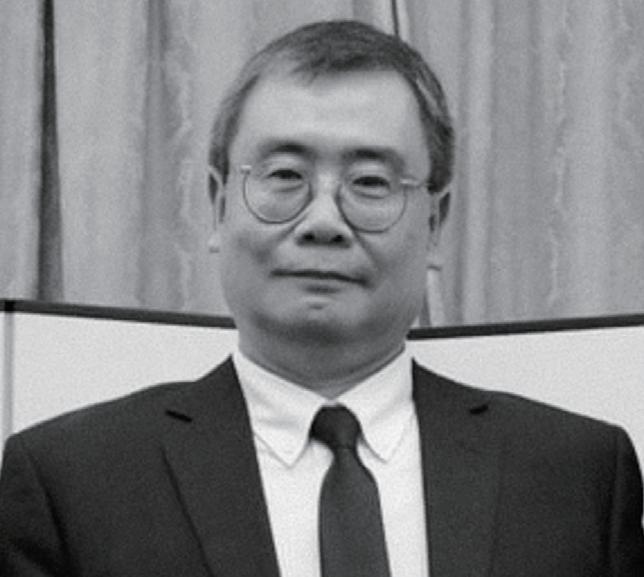
私たちは、国際協力を通じて解決しなければならな いグローバルな問題をたくさん抱えています。国連 は17の持続可能な開発目標(SDGs)、つまりより良 い、かつより持続可能な未来を達成するための計画 を策定しました。達成には学界の国際協力が不可 欠です。この協同における大学の役割は大幅に広が っています。
約150年前にUCLで勉強をした日本人学生は、英 国と日本の交流に大きく貢献しました。1902年、英 国と日本の政府は日英同盟を締結しました。UCLで 最初に学んだ日本人学生の一人で、最初の在英日 本大使と外務大臣になった林董はこの同盟に貢献 しています。
この同盟を通じて、日本の近代化が進み大国の一つ となりました。日本の政治、外交、産業は急速に進歩 し始め、国際社会における日本の役割が向上しまし た。明治時代(1867年~1912年)には3万人以上 の日本人学生が英国の大学で学びました。その数は 現在英国で学んでいる日本人学生の数よりもはるか に多く、例えば今年はUCLには180人の日本人学生 しかいません。UCLの卒業生は日本の学界の基盤 を確立しました。森有礼は明治維新後の最初の内閣 で文部大臣になり、一橋大学を創設しました。山尾 庸三は日本に工学を導入した工学の父として知られ ています。畠山義典は日本で最初の大学、東京大学 の創設に貢献しました。櫻井譲二は日本学術振興 会(JSPS)の初代会長に就任し、日本学士院(学士 院)や理化学研究所(理研)の創設にも貢献していま す。町田久成は国立図書館の初代館長でした。
The Anglo-Japanese Alliance also contributed to the UK, significantly enhancing UK’s global strategy in the Asia-Pacific area. However, this alliance ended in 1923 because the UK and Japan moved to political links with the United States and France in the Four-Power Treaty. Academic interaction between the UK and Japan was subsequently downsized.
Recently, the importance of the UK-Japan Alliance has been re-recognized. Asia House, a think tank specializing on Asia, recently published “JapanUK Relations After Brexit: Looking Towards a Closer Economic Partnership”. This report focused on the importance of the UK-Japan interaction. In 2014, Japanese Prime Minister Shinzo Abe, visited UCL with 14 presidents of Japanese top universities and organized a UKJapan Universities Conference with 16 of the top British universities, including Cambridge and Oxford. They discussed the next steps of university collaboration in education and research. In particular, both the UK and Japan recognized the importance of research on ageing socieity.
In 2017, UK Prime Minister Theresa May, visited Japan and discussed the economic partnership between the UK and Japan. In 2019, May and Abe agreed that the UK and Japan should forge a new alliance to shape the 21st Century. This emphasized the importance of academic collaborations in medical research, robotics and use of data. After Brexit, Prime Minister Boris Johnson, was promoting the idea of a "Global Britain” and the alliance with Japan is one of the major focuses. Johnson also announced his goal to join the Comprehensive and Progressive Agreement for Trans-Pacific Partnership (CPTPP), and the Japanese officials are welcoming the idea of UK becoming part of the current 11-nation trade group. These recent developments demonstrate the importance of a new alliance between the UK and Japan in politics, economy, and academia.
日英同盟は英国のアジア戦略の強化にも貢献しま した。しかしこの同盟関係は1923年に解消されま す。四カ国条約により英国と日本は、米国とフランス との政治的つながりを持つようになり、その結果英 国と日本 の間での学術的交流も縮小されました。
しかし再び日英関係の重要性が認識されていま す。アジア問題を扱うアジア・ハウスは、「英国のEU 離脱後の日英関係:より親密な経済連携に向けて (Japan-UK Relations After Brexit: Looking Towards a Closer Economic Partnership)」と いう報告書を発表し、ここでは日英関係の重要性に 焦点を当てています。2014年、日本の安倍晋三首 相が、日本のトップ14大学の学長とともにUCLを訪 れ、ケンブリッジやオックスフォード大学等の英国の トップ16大学の学長と共に日英大学会議を開催し ています。ここでは大学間の教育と研究分野におけ るコラボレーションの次のステップについて議論さ れました。特に、日英両国でが社会の高齢化に関す る研究の重要性を認識しています。
2017年には英国のテレサ・メイ首相が来日し、そこ では英国と日本間の経済連携について話し合われ ました。2019年にメイ首相と安倍首相は、日英間 で21世紀形成に向けて新たな同盟関係を築く考 えで合意して います。ここでは医学研究、ロボット 工学、そしてデータの仕様における学術協力の重要 性が強調されました。英国のEU離脱後、英国のボリ ス・ジョンソン首相は「グローバル・ブリテン(Global Britain)」のアイディアを推進していますが、ここでも 日本との同盟は英国の 主要な焦点の1つです。ジョ ンソン首相は、環太平洋 パートナーシップに関する 包括的及び先進的な協定(CPTPP)に参画する目標 を発表し、日本政府もこれを歓迎しました。このよう な最近の進展により、政治、経済、学術を含む英日 関係の全ての面で新しい英日同盟の重要性を示し ています。
In particular, academic interaction between the UK and Japan must be fundamental for all aspects. However, the current level of academic interaction is only a fraction compared with 100 years ago. In the Meiji Period, British experts worked in Japanese universities and industries and many had professorships in Japanese universities, known as “oyatoi gaikokujin”, with significant contribution to the establishment of Japanese academia. Henry Dyer, a Scottish engineer became the Principal of Imperial College of Engineering (Faculty of Engineering, University of Tokyo) and introduced westernstyle engineering education in Japan. Returning from Japan, he became a life governor of Glasgow and West of Scotland Technical College (University of Strathclyde) and accepted many students from Japan. Currently, the number of British researchers and students in Japan is very limited.
In March 2021, the Japanese government announced the University Fund Programme (£68 Billion /10 trillion yen fund), the largest Government fund to Japanese universities. Selected top Japanese universities will receive this fund to dramatically improve their quality of research. On 24th March 2021, Professor David Price (Vice Provost, Research, Innovation & Global Engagement, UCL) was invited as the main speaker at the first meeting of this fund, in which the directions and aims for the project were decided. David talked about UCL’s strategy of research and education for the next generation of academics and highlighted that. International research collaboration and students/researchers exchange are fundamental for improving the quality of research and education in universities. In addition, international collaborations are the key to solving large international problems and sustaining our societies. We hope that this new fund will facilitate interaction between Japanese and UK universities.
A majority of Japanese universities were founded in the Meiji Period by Japanese academia who studied abroad, mainly in the UK. Japanese universities significantly developed in the last 50 years, especially in science and technology, which contributed to the development of Japanese industry. Now, Japan is one of the most advanced countries in the production of industrial products. The UK has always led in science, technology, and innovation but industrial production is not as strong. Combination of resources between the UK and Japan has the potential to provide great deals of significant impacts on our global society.
特に、英国と日本間の学術的交流が全ての基盤に ならなければいけませんが、現在の学術的交流は 100年前と比較するとほんのわずかです。明治時代 には英国の専門家が日本の大学や業界で働き、多 くの英国人が日本の大学で「お雇い外国人」と呼ば れる教授職につき、日本の学界の確立に大きく貢献 しました。スコットランドのエンジニアであるヘンリ ー・ダイアーは工部大学校(東京大学工学部)の校 長を務め、西洋式の工学教育を日本に導入しまし た。日本から帰国したダイアーは、グラスゴー・スコ ットランド西部工科大学(Glasgow and West of Scotland Technical College)(ストラスクライド 大学)のライフガバナーになり、日本から多くの学生 を受け入れました。しかし現在では、日本にいる英 国研究者や学生は少数です。
2021年3月、日本政府は日本の大学にとって最大 の政府基金である大学基金プログラム(680億ポン ド/10兆円の基金)を発表しました。選ばれた日本 のトップ大学は、研究の質を劇的に向上させるため この基金を受け取ることになります。2021年3月24 日、デイビッド・プライス教授(UCLの研究、革新およ び国際的な関り担当の副教授)がこの基金の最初の 会議のメイン講師として招待され、プロジェクトの方 向性と目的が決定されました。デイビッドは次世代 の学者のためのUCLでの研究と教育の戦略につい て熱く語りました。大学での研究や教育の質を向上 させるには、国際的な共同研究や学生/研究者の交 換制度が不可欠です。また、国際協力は大きな国際 問題を解決して私たちの社会を維持するためのカギ となります。この基金が日本と英国の大学の間での 交流を促進することを私たちは願っています。
ほとんどの日本の大学は、明治時代に外国、特に英 国で学んだことがある学術者によって創設されてい ます。日本の大学はここ50年の間で、特に科学と技 術において著しく成長し、日本の産業の成長に寄与 しています。現在では、工業製品を製造する先進国 の1つとなった日本。英国は化学や技術、革新には 強いですが工業製品にはそれほど強くはありませ ん。英国と日本のリソースを合わせることで、現在の グローバル社会に大きな影響を与える可能性はと ても大きなものになります。
Chairman & CEO
IAFOR(日本、名古屋) 創設者兼会長兼CEO
When we held the first European Conference on Aging and Gerontology at the Bartlett Real Estate Institute at University College London in December 2019, it was before the coronavirus had entered the common vocabulary. It now conditions everything we do as an organization, and has had an enormously damaging impact across the world.
However, the global pandemic has served to underline the wider intellectual context in which this event was held, as we shall outline below.
The International Academic Forum (IAFOR) is an international NGO that inspires and nurtures global research collaborations by providing platforms to connect people and ideas across borders and disciplines, and international fora for academics to engage with other societal stakeholders and decision makers, and in the fundamental understanding that only interdisciplinary collaborations will be generative of the solutions needed to address the world’s most pressing issues. These issues are taken to be global not just in their reach but also in reference to the fact that they are not discipline specific.
The biggest problems collectively facing us, such as climate change, terrorism can be considered those of “Human Security”, otherwise termed non-traditional security issues, although these are closely connected. These include absolute concepts such as hunger and thirst, as well as more relative and malleable constructs such as “poverty” and “freedom”
Many of these issues such as “hunger” and “thirst” seem to still reside in our consciousness as being things that are being addressed in the course of general human progress, or to be addressed by government development aid or overseas charities and that is mostly accurate for the industrialized world, however many of these issues are not problems from which we can be so easily geographically distanced.
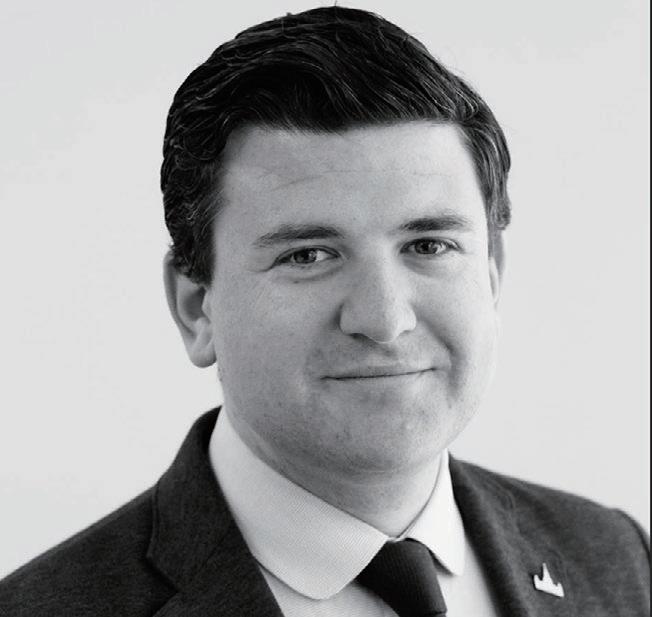
2019年12月、我々がユニバーシティ・カレッジ・ロ ンドンのBartlett Real Estate Institute で老齢化 と老年学に関するヨーロッパでは初めてのカンファ レンスを行ったのは、コロナウイルスという言葉が認 知される前のことでした。本報告書を書いている現 在、コロナウイルスによって私たちの組織活動すべ てが制限され、世界中で大きな損害が出ています。 しかし、この世界的なパンデミックにより、私が以下 で説明するイベントの知的背景が明確になりました。
国際学術フォーラム(IAFOR)は国際的な研究を促 進するための国際的な非営利組織です。このフォー ラムでは、学術的コラボレーションのみが世界の差 し迫った問題に必要な解決策を生み出すという基 本的理解の元、国境や分野の垣根を超えて人々やア イデアをつなげるプラットフォームを提供しており、 学術者が他の社会的利害関係者や決定権を有する 人々と関わりが持てる国際的なフォーラムを開催し ています。これらの問題はその範囲内だけではなく、 特定分野に固有しないグローバルな問題であると みなされます。
気象変動やテロなどの我々が直面している最大の 問題は「人々の安全」に関する問題、またはこれまで にはなかった安全に関する問題とされますが、これ らはとても密接につながっています。飢えや渇きとい った絶対概念に加え、「飢餓」や「自由」などより関連 性のある可鍛性構造が含まれます。
「飢え」や「渇き」などの問題の多くは、一般的な人 間の進歩や政府の開発支援や海外への寄付などの 中で扱われるものとして我々の意識の中にいまだに 残っているようです。産業世界では最も正確とされ ていますが、これらの問題の多くは地理的な問題が あり、簡単に切り離せるものではありません。
The first key takeaway of so many of these issues is the seemingly contradictory statement that we are all in this together, while simultaneously not all being in this together. We are so globally connected that what is going on the other side of the world is no longer something from which we are protected by thousands of miles and national borders. That is to say, everything is related, whether it may seem to be just a local problem or not. Indeed many of the responses and the solutions to meet these diverse challenges, from large-scale air or sea pollution, to demographic changes including mass migrations of peoples, and globally aging societies, and their impact are no longer something that can be left to each government alone.
One of the clear advantages and underpinnings of the European Union and its pooled sovereignty is the ability to recognize, address and implement ways of coordinating national policies and harmonizing so that resources are spread in some ways equally in order to tackle big issues, and has enacted numerous measures addressing such issues as emissions in cars to common safety standards. On the same principles and on a larger canvas, but with agreements rather than legally binding enforcement, the United Nations umbrellas a large number of agreements now under the 2030 Sustainable Development Goals (SDGs), succeeding the Millennium Development Goals of 2000 in 2016.
Although non-binding, the SDGs bring the developing world and the industrialized developed economies countries to share the burden on an equal basis. Previously it was about “polluters pay” or the richer countries pay for more to address some of the environmental issues, which created some clear diplomatic hypocrisy, for example on climate change with more developed nations agreeing to meet targets only feasible because of outsourcing and offshoring of manufacturing and therefore pollution, to countries such which were allowed far greater “allowances” because they were still developing. But in large part because countries such as India and China are getting richer, now there is a strong domestic pressure to address pollution as it impacts the immediate local health and well-being of citizens.
This recognition of the UN as a platform to address not only territorial and security issues, but other threats to peace and human security issues, developed rapidly after the cold war, along with the understanding that traditional and non-traditional security issues were highly connected, and indeed seeing problems on the level of the individual and the local through human security paradigms underlined the focus and the empowerment of entities smaller than governments as being important stakeholders.
このような問題の多くを取り除く一つ目のカギは、同 時に一緒にいることはできないけれど、我々全員が 一緒にいるという一見矛盾した考え方です。グロー バルでつながっているので、数千マイルも離れた、別 の国で世界で起こっているからと言って、私たちが 守られているとは言えません。つまり、地域的な問題 に見えてもすべてに関連性があるということです。実 際、大規模な空気/海上汚染や集団移動などの人口 動向、そして世界的な高齢化社会など様々な課題へ の対応や解決策の多くや、それからの影響を、もはや 各国政府だけに任せておくわけにはいきません。
欧州連合とその主権には、国の政策を調整し調和す る方法を認識し、それに取り組み、それを実行に移 すという、土台的且つプラスとなる能力があるので、 大きな問題に取り組むためのリソースを平等に割り 振ることができます。また、自動車の排気ガス排出量 などの対策を施行し、一般的な安全基準を設定する ことができました。同じ原則と大きなキャンバスで、 しかし法的拘束力のある執行ではなく合意で、国連 は、2016年の2000年ミレニアム開発目標を引き継 ぐ2030年の持続可能な開発目標(SDGs)の下、多 数の合意を得ました。
拘束力はありませんが、SDGsにより発展途上国と 先進国が平等に負担を負うことになります。以前は「 汚染者負担」、または豊かな国が多くの費用を支払 う形でした。これにより、例えば気候変動について、 先進国が製造をアウトソーシングやオフショアリン グし、実現可能な目標のみ達成することに同意する など、明らかに外交的偽善が生まれてしまい、「許容 量」が多い発展途上国の汚染へとつながってしまい ました。しかしインドや中国などが豊かになり、市民 の健康や福祉に汚染が直接的に影響するため、国 内からの圧力が大きいというのが主な理由です。
国連は、領土や安全保障だけでなく冷戦後急速に 高まった平和や人の安全を脅かす他の事柄につい ても取り組むプラットフォームとして認知し、これま でにあった安全問題や新たな安全問題は深くつな がっているということを理解し、政府よりも小さい、 重要なステークホルダーである組織への権限譲渡 を明確にしている、人間の安全保障パラダイムを通 して、個人/地域レベルで問題を考えるべきです。
The SDGs are a strong platform where the challenges and the consciousness that something has to be done is globally shared. One of the key features of the SDG’s is that the actors, the stakeholders, are not just the governments, but businesses and other non-state actors; it is therefore a global and open project that encourages any entity, of whatever size, and whether in the public or private sector to sign up to the goals, and where they are incentivized to address them.
The SDGs are particularly important in the context of rising global nationalism and populism, and when associated organs, as well as the institution of the UN itself, can present an easy target, the goals are far harder to malign and unnecessarily politicize. In this way they are arguably stronger as they can force or even bypass unhelpful government policy positions.
As the 8 Millenium Goals were highly interconnected, so the SDG’s are, with an understanding that these issues constitute a virtual overlapping, multidimensional and multilayered venn diagram. This underlines the interrelatedness of different goals and whatever the focus also underpins the importance of international perspectives and interdisciplinary solutions in addressing them.
So in using “Good Health and Well-Being” as the primary goal (SDG 3) as the most likely lens through which to look for this European Aging and Gerontology conference, we also referenced many other goals in the individual presentations, such as those on Gender Equality (5), Decent Work and Economic Growth (8), Industry, Innovation and Infrastructure (9), and Reduced Inequalities (10). While these are not a panacea, nor are they intended to be, they are a powerful way of underlining the importance of collaborative and interdisciplinary approaches, particularly when we all live in this era of highly specialized training. As I wrote above, global issues are not only considered such because they’re borderless, but because of their complex occurrence of many factors. We all need to share our expertise and minds, in this engagement and practice of international collaboration.
課題に取り組む、そしてそのためには何かをしなけ ればという意識を世界で共有する強力なプラットフ ォームがSDGsです。SDGsの重要な特徴の1つは、 行動を起こす人や利害関係者が政府だけでなく、企 業やその他非国家機関であるということです。した がって、規模や公的か民間かに拘わらず、グローバ ルでオープンなプロジェクトであり、あらゆる機関が この目標に賛同するよう呼びかけています。
世界的な国家主義や人民主義の高まりが背景にあ ると、特にSDGsが重要になります。関係機関や国 連機関がすぐに達成できそうな目標を設定できる と、悪意を持って不必要に目標を政治化するので、 目標達成が難しくなります。このように、役立たずの 政策に強制力を持たせたり無視することができるの で、間違いなく強力なものになります。
8つのミレニアム目標はとても相互に関連してお り、これらの問題は仮想的に重なり合っているの で、SDGsは多次元で重層的なベン図です。つまり、 異なった目標も相互に関係し、焦点がなんであれ、 問題に取り組む際の国際的視点と学際的解決策が 重要です。
そのため、このヨーロッパの高齢化と老年学の会議 では、最も可能性の高いレンズとして、主要目標を「 すべての人に健康と福祉を」(SDG3)としました。ま た、ジェンダー平等を実現しよう(5)、働きがいも経 済成長も(8)、産業と技術革新の基盤をつくろう(9 )そして人や国の不平等をなくそう(10)など、個々 のプレゼンテーションで他の目標も参照しました。 あらゆる問題の解決法でも意図されたものでもあり ませんが、私たち全員が高度に専門化された時代に 生きる今、協調的かつ学際的なアプローチの重要 性を強調する強力な方法です。上述したように、国 際問題は国境がないという理由だけでなく、多くの 要因が複雑に絡まっています。世界一丸となって取 り組むために、私たちは専門知識や考え方を共有す る必要があります。
Conferences such as these presuppose cooperation, collaboration and in the individuals. However, this good faith is a lot easier to center around issues that are not political hot potatoes, and where interests can be aligned on healthcare and aging populations, for example, than territorial disputes or claims between states. By focussing on examples of international collaboration or international cooperation, one can bypass intractable problems, and instead focus on that which unites us, including our most pressing common challenges. Historical animosities or national egos need to be set aside in the face of global crises affecting the future of our planet, whether it be climate change and associated environmental fallout, global pandemics which destroy economies, or nuclear annihilation. And what is more, given the interconnectedness of these global issues, the focus on cooperation and collaboration on problems which can be addressed, can often help in areas that cannot for one reason or another.
The strength of IAFOR is in the diversity and openness of its network, and this inaugural EGen Conference attracted a different and diverse number of people, including those from policy making, and diverse fields in arts, humanities, sciences and social sciences, such as engineering, robotics, ethics, health, tourism, security, architects and designers, all addressing aging and gerontology as a part of this globally connected agenda.
このような会議では協力、協同、そして個人が前提 となります。しかし、政治的に厄介な問題ではない 問題に誠実に取り組めば、必ず進展します。国家間 の領土問題よりも医療や高齢化に対して関心を呼 び起こすことができます。国際協力や国際共同を推 し進めれば、私達は手に負えない問題を回避でき、 差し迫った共通の課題などに団結して取り組むこと ができます。気候変動やそれに伴う環境問題、経済 破綻に追い込む世界的パンデミック、核廃止など、 地球未来に影響を与える世界的危機に直面してい る今、歴史的な敵意や国家のエゴは後回しにするべ きです。これらの世界的問題は相互につながってい ます。だからこそ、積極的に協力・共同して問題に取 り組めば、なんだかんだ無理だと思っていることもど うにかできます。
IAFORの強みはネットワークの多様性とオープン性 にあり、政策立案者や芸術、人文科学、科学、そして 工学やロボッティクス、倫理、健康、観光、安全保障、 建築家や設計者などの社会科学という様々な分野 等の多くの人々がこの最初のEGen会議に興味を持 っています。そして全員が高齢化と老年学を世界的 に共有した議題の一部としています。
OSIPP, Osaka University
Co-Director, IAFOR Research Centre (IRC)
大阪大学大学院国際公共政策研究科特任教授
大阪大学大学院国際公共政策研究科IAFOR研究センター
In 1984, the UK and Japan set up the UK-Japan 2000 Group with the blessing of Prime Ministers Margaret Thatcher and Yasuhiro Nakasone. It was a consultative group comprised of business leaders, government officials, academics and journalists. In today’s parlance, it would considered a “Track II” dialogue group to enhance communication and lay the foundation for meaningful cooperation and collaboration between the two countries. The founders were mindful that the group should not live beyond its usefulness, hence 2000 (it has since become the 21st Century Group).
I had the privilege to join one of the Group’s get-together as a fellow at Chatham House in the mid-1990s. At the time, I remember the UK side suggesting one area for UK-Japan collaboration, for which the Japanese side was slightly unprepared. And, this was on issues related to ageing society. This would have been a natural area for collaboration then, but I sensed that it was not going to fly for a reason that I could only surmise as the Japanese side’s lack of enthusiasm. Interlocutors and agenda setting matter—and matching people with similar interests is often the key to having productive conversations. In this instance, I believe that the Japanese present happened to have interests elsewhere.
It was, therefore, with some sense of vindication (for the UK side back then) that I took part in a milestone event between UCL and Japanese academics around the EGen conference two decades after witnessing an aborted effort. Nonetheless, it appears that the Group’s vision from 40 years ago has come to fruition. The Group was arguably a vehicle that aided at the time for Japanese businesses to invest in the UK, as a foothold to gaining access to the European market. It also was instrumental in setting up what is now known as the JET programme. Now that the UK has left the European Union, there is renewed interest in the two countries to develop a special relationship. I only hope that the Japanese side is ready this time.
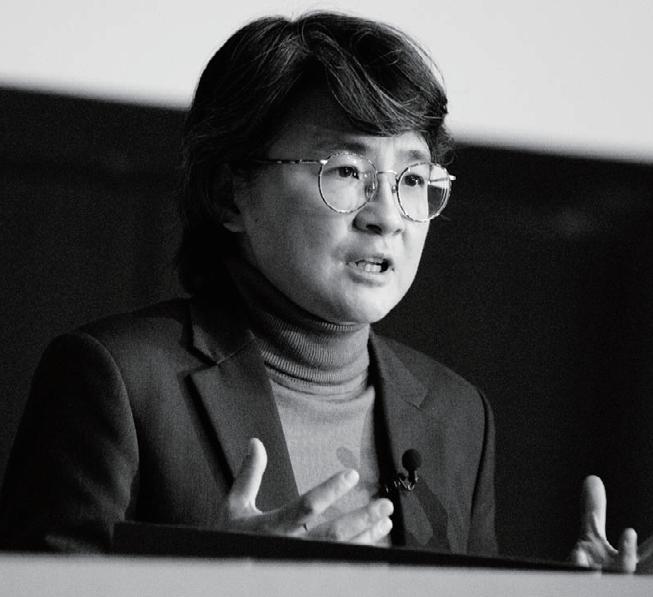
日英2000年委員会へのささやかな賛辞 1984年、日英両国は、マーガレット・サッチャー首相 と中曽根康弘首相の肝いりで「日英2000年委員会」 を発足させました。これは、ビジネスリーダー、政府関 係者、学者、ジャーナリストなどで構成される諮問機 関でした。今風に言えば、日英間のコミュニケーショ ンを強化し、有意義な協力と協調のための基礎を築 くための「トラックII」対話グループと言えるでしょう。 創設者たちは、このグループがその有用性を超えて 存続すべきではないと考え、2000年と名付けました (その後、21世紀委員会となりました)。
私は1990年代半ばにチャタムハウスのフェローとし て、このグループの懇親会に参加する機会に恵まれま した。その時、英国側から日英の協力分野を提案した のですが、日本側はやや心許なかったことを覚えてい ます。それは、高齢化社会に関する問題でした。当時、 日英の共同研究としては当然の分野であったはずで すが、日本側の熱意のなさとしか思えない理由で、う まくいかないと感じたものです。対話者とアジェンダ・ セッティングは重要であり、同じ関心を持つ者同士の マッチングが生産的な会話をするための鍵になるこ とが多いです。この時の場合、日本側の出席者は、たま たま別のことに関心があったのだと思います。
ですから、挫折を目の当たりにした20年後に、UCLと 日本の研究者がEGen会議を中心に行う画期的なイ ベントに私が参加したのは、(当時の英国側にとって) ある種の正当性を証明することになりました。いずれ にせよ、40年前の日英2000年委員会の構想が実を 結んだようです。当時、日本企業がヨーロッパ市場に 参入する足がかりとして、英国への投資を促進したの は、間違いなく当委員会でした。また、現在ではJET プログラムとして知られているものの設立にも貢献し ました。英国がEUを離脱した今、日英両国は特別な 関係を築きたいと改めて考えているようです。今度こ そ、日本側の準備が整うことを願うばかりです。
Professor of Medicine and Health Care Science
医学・医療科学教授
Since I was seven years old, I’ve been living and working with older people. My grandfather who was well read in Greek philosophy, among other things, was the brightest and best teacher for me. He taught me astronomy, physiology and what the future of humanity via technology is likely to evolve into. I ended up studying medical anthropology and cellular physiology of aging and then became a medical doctor. With this early life experience, you can imagine that my view of aging is biased despite my 18 years of research and hands-on work with older adults who had either or both physical and cognitive decline.
Speaking broadly, I believe that aging is indeed a combination not genetics only, or epigenetics only but also the intangible aspects of our spiritual self (soul). This perspective dates to Socrates, Plato and Aristotle, although their discourse is based more on philosophical lingo their thoughts can easily be classified in modern terms to fall in the same groups.
Studies of older people who have been labeled as having various forms of dementia, still have significant capacity to relate to each other, to their families, and engage new technologies in a way that would amaze most of us. An important emerging factor in the medical field, including aging, is the role of resilience and inflammatory processes. Chronic inflammation of course is associated with a variety labeled medical diseases such as heart failure, diabetes, cancer. However, psychic-social stress and our ability to cope with life's challenges are the strongest underlying factors leading to inflammation at the cellular level and thus enhancing the aging process.
How to cope with the expected and unexpected stressors of life therefore is key to how our body and mind maintain functionality as time passes. For a successful aging of body and mind, we need to create resilient pathways by enhancing a society that supports social connectivity, living healthy lifestyles (i.e. food, physical activity) and having meaningful inclusive communities. To accomplish these goals, we need to rethink how we train health professionals, how we empower citizens to live a quality life, how we build our health care facilities, our community and neighborhoods and of course our own homes.
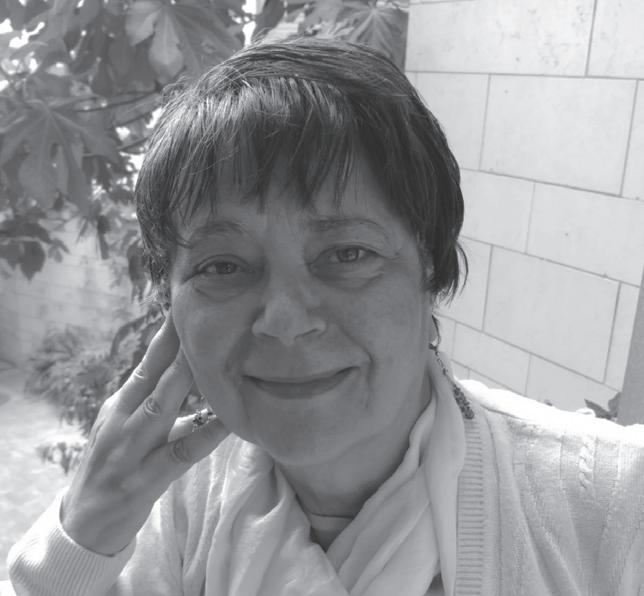
7歳の頃から高齢者と生活や仕事を共にしてきました。 私の祖父は中でも特にギリシャ哲学に明るく、私にとって 最も賢明で最良の教師でした。祖父からは宇宙学や物理 学、技術を介して人間社会が将来どのように変革するか を教わりました。その後、私は老化における医療人類学と 細胞生理学を学び、医者になりました。
このような経験から、私は18年間に渡って、身体や認知 機能が低下した高齢者を対象とした研究や実地調査を 行ってきましたが、老化に対する見方が偏っていることは 容易に想像のつくことです。
大きく言えば老化とは、遺伝だけ、またはエピジェネティッ クスだけに起因するものではなく、目に見えない霊的な自 己(魂)の側面との組み合わせであると私は考えています。 このような大局的な考え方はソクラテスやプラトン、アリス トテレスの時代から存在していました。彼らの論説は哲学 的な用語に基づいていますが、彼らの考えを現代の言葉 で簡単に分類すると、同じグループに分類されます。
様々な形態の認知症と診断された高齢者を対象とした研 究は、驚くべき方法で、お互いに、家族に、そして新しいテ クノロジーに関わる大きな可能性を秘めています。
老化を含む医療分野では、回復力と炎症プロセスの役割 が重要な新要素となっています。慢性的な炎症はもちろ ん、心不全、糖尿病、がんなど、様々な医学的疾患に関連 しています。しかし、精神的・社会的ストレスや人生の課題 に対処する能力は、細胞レベルでの炎症を引き起こし、結 果として老化を促進する最も有力な要因と言えます。
そのため、想定内、または想定外のストレスにいかに対処 するかが、時を経ても心身の機能を維持する鍵となりま す。心身ともに上手に年を重ねていくために、社会的なつ ながりを支援する社会、健康的なライフスタイル(食事や 運動など)、そして有意義な包括的コミュニティに属し、回 復につながる経路を作る必要があります。これらの目標を 達成するためには、医療従事者の育成方法、質の高い生 活を送れるようにする方法、医療施設やコミュニティや近 隣地域、そしてもちろん私たち自身の家の在り方について 見直す必要があるでしょう。
Director, NACDA Program on Aging
at the University of Michigan ミシガン大学
老齢化に関するNACDAプログラム ディレクター
Perspectives on aging have dramatically changed since I began work in this field over 30 years ago. We once treated aging as an event that began at age 60 or so, independent of other influences. Now we employ a more holistic stance that sees age as an integrated aspect of lifecourse experiences. No longer a simple process of senescence, aging is a complex combination of early experiences, community effects, and life events from cradle to grave. Globally, much of my work has examined ways to encourage traditional family support networks for older adults. One of the more startling changes I have seen has been the rapid transition of Eastern filial support traditions and adopting a more Western approach of greater inter-generation independence. This change is marked by a growing desire of older adults in Asia not to burden their children, a uniquely Western perspective. While a predictable outcome of increased longevity and an expanding older population, this cultural transition leaves elders more vulnerable and more at risk from diminishing social status. Ideally, establishing pathways that enhance autonomy and independence while maintaining a sense of family obligation to ensure needed support will represent the next phase to support successful aging.
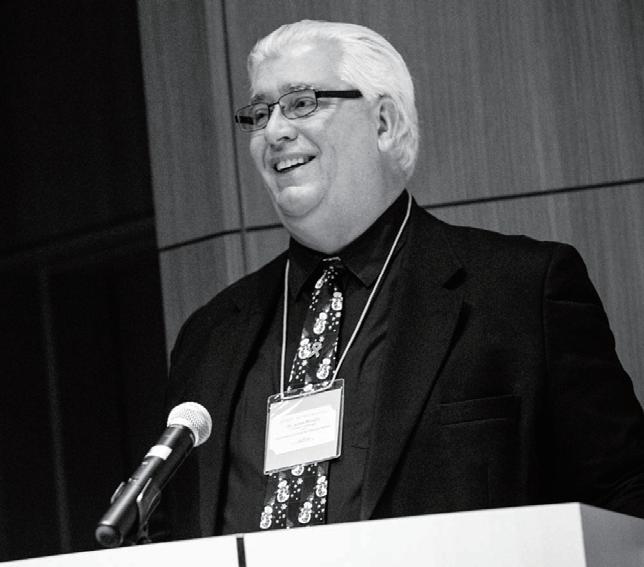
老化に対する考え方は、私が30年以上前にこの分 野で働き始めてから劇的に変化しました。私たちは かつて、老化は60歳頃から始まり、他からの影響に 関係ない事象として扱っていました。今では年齢を、 ライフコースに統合された側面と見なす、より総合 的な立場から見ています。もはや単なる老化ではな く、初期の経験や地域社会の影響、そしてゆりかご から墓場までのライフイベントの複雑な組み合わせ が老化です。私の仕事の多くで、高齢者のための伝 統的な家族支援ネットワークを世界レベルで奨励 する方法を検討してきました。私が目にした驚くべき 変化の1つは、東洋で伝統的な親の介護様式の急 速な変化と、世代間の独立性を高めるという、より 西洋的なアプローチの採用です。この変化は、アジ アの高齢者が子供に負担をかけたくないと望むこと が多くなってきたという特徴があります。これは西洋 独自の視点です。寿命が長くなり、高齢者人口の増 加が予測可能である一方、この文化的移行により、 高齢者はより弱くなり、社会的地位が低下するリス クが高くなります。理想的には、家族だから支援しな ければという義務感を維持しながら、自律性と独立 性を強化する道を確立することが、成功する高齢化 を支援するための次の段階となります。
Director of the Intelligent Robotics Laboratory,
The Graduate School of Engineering Science at
Osaka University
大阪大学大学院 基礎工学研究科
Elderly care requires both physical and mental support. In particular, mental support has not yet been perfected. The dialogue robot "Telenoid" that we are developing is a robot that allows the elderly to interact without resistance, and we believe that it will contribute to the mental support of the elderly. We would like to improve the living environment of the elderly with robots that the elderly feel cheaper to interact with than humans.
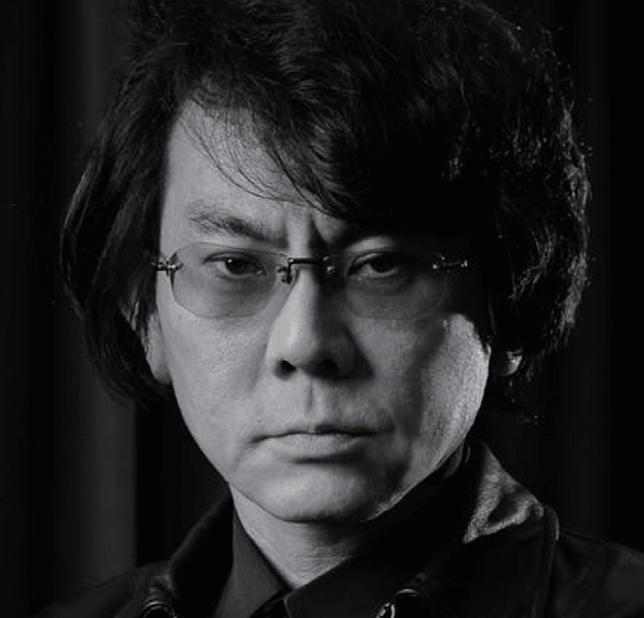
対話ロボット「テレノイド」
高齢者介護においては,物理的な支援と精神的な支 援の両方が必要になる.特に精神的な支援は未だ 行き届いていない.私たちが開発している対話ロボ ット「テレノイド」は,高齢者が抵抗なく対話できるロ ボットであり,高齢者の精神的支援に貢献するもの と考えている.高齢者が人よりも関わり安く感じるロ ボットで,高齢者の生活環境を改善していきたい。
at University College London ユニバーシティ・カレッジ・ロンドン
老齢化社会学教授
The most noticeable issue in addressing issues of later life is the realisation that for many older people there is a feeling that sections of the older population are increasingly seen as constituting a category outside of mainstream society. In my work I have described this as a fear of the fourth age; a cultural and social space where choice and agency are given over to others. The gap between those who can experience post-working life as a relatively healthy positive experience and those whose impairments and dependencies restrict such opportunities have become more stark over the past few decades.
The task for researchers as well as policymakers is two-fold: firstly, to recognise that for all the improvements in later life there are still going to be groups for whom old age is going to continue to be defined by deleterious changes to the body and this will need to be addressed; secondly, as a consequence of this bifurcation of the older population, there needs to a commitment to work towards solutions that both recognise limitations while also prioritise human and moral principles about the dignity of all older people and not just those who participate most in society.

晩年の問題について最も目につくのが、高齢者層を 世間から外れたカテゴリーとして扱う頻度が増えて きたと高齢者が感じている点です。私の職場では、 第4世代の恐怖と呼んでいます。第4世代とは、選択 と主体性が他者に委ねられる文化的かつ社会的空 間のことです。引退後の人生を、比較的健康でポジ ティブなものと感じる人と、障害や依存によってその ような機会が制限されると感じる人とのギャップは、 ここ数十年でより顕著になっています。
研究者や政策担当者に課せられた課題は二つありま す。一つは、後期高齢者の生活が改善されても、身体 の好ましくない変化によって定義され続けるグループ が存在することを認識し、それについて取り組む必要 があること。そして二つ目は、高齢者層がこのように 二分された結果、社会に参加している高齢者だけで なく、全ての高齢者の尊厳に関する人間的・道徳的原 則を優先する解決策に取り組む必要があることです。
Chadwick Professor of Civil Engineering at University
College London ユニバーシティ・カレッジ・ロンドン
土木工学 チャドウィック教授
Ageing is basically a numerical construct. What happens during a person’s life is that they change– from baby to toddler, to adolescent, to adult, and so on. At each stage, some characteristics are stronger and some weaker –some are in the stage of growing or developing and others are changing in different ways.
An older person’s sight changes but their life experience does as well, so that they could find better ways of meeting their needs. It is too simplistic to say that ageing simply means that things become worse. Our research starts from the concept of Capabilities – the comparison between what people can do, and what the environment requires them to do – and it is this mismatch that causes problems for people in terms of being able to do the activities they wish.
By examining capabilities we learn what a person needs to be able to do to meet the requirements of their chosen activities and the environments in which they occur, and that then determines how we approach the design.
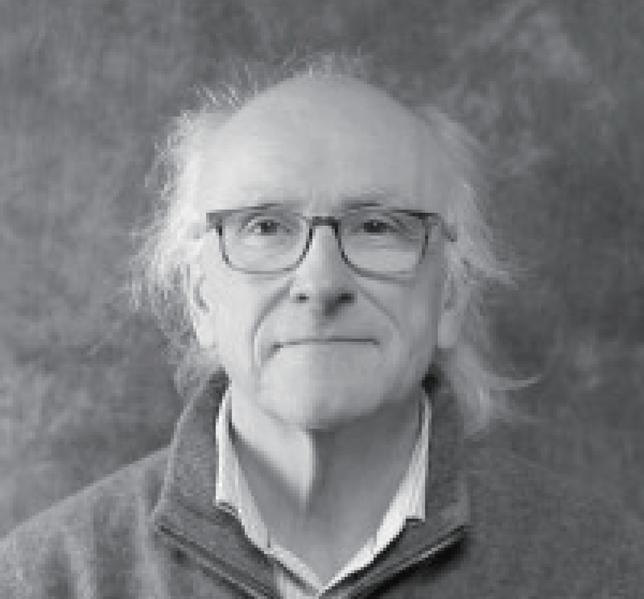
設計のせいで人々を困らせてはならない…
老化とは基本的に数値で表されるものです。人は一 生の間に、赤ちゃんから幼児、青年、成人へと変化し て行きます。それぞれの段階である特性は強くなり、 またある特性は弱くなります。成長や発達の段階に いる人もいれば、違った形で変化する人もいます。
高齢者の視力は変化しますが、人生経験も同様に変 化します。故に各々のニーズを満たす、より良い方法 を見つけることができるでしょう。単純に、年を取ると 物事が悪くなると言い切れません。私たちの研究は、 人ができることと、周囲の環境が要求することを比較 するという、「能力」という概念からスタートしており、 これらが合致しないことが原因で、人々がしたいと思 っていることができないという問題が発生します。
能力を調査し、自分が決めた物事を実行し、その環 境に必要なことは何か、そして設計へのアプローチ 方法を学びます。
Professor James Barlow
Chair in Technology and Innovation Management
at Imperial College London インペリアル・カレッジ・ロンドン テクノロジ ー&イノベーションマネージメント 教授
The role of the built environment is usually neglected, yet it is an essential component of a health and social care system that supports successful ageing. Adoption of innovations in technology, services and organizational arrangements may be constrained by the built environment as much as their wider policy and institutional context.

高齢化社会を成功させるために構築環境の 革新が必要な理由
構築環境の役割は軽視されがちですが、上手な老 齢化を支える医療システムや社会介護システムには 不可欠な要素です。技術、サービスや組織的構成の 刷新は、政策や制度上の状況と同じくらい、構築環 境によって制約を受けるかもしれません。
Professor Tsuyoshi Sekitani
Professor at The Institute of Scientific and Industrial Research, Osaka University 大阪大学産業科学研究所 教授 関谷毅
Aging healthily and happily is something that we all crave for. What is important for all of us to achieve this? Modern society is supported by advanced science and technology and has become extremely rich physically, but from now on, the value of spiritual richness will increase. It is important to be close to people and to understand them more deeply, even to the spiritual level. I am convinced that realizing science and technology that is close to the human heart will lead to "true harmony" between humans and machines. I would like to continue to create science and technology that is close to people's hearts.
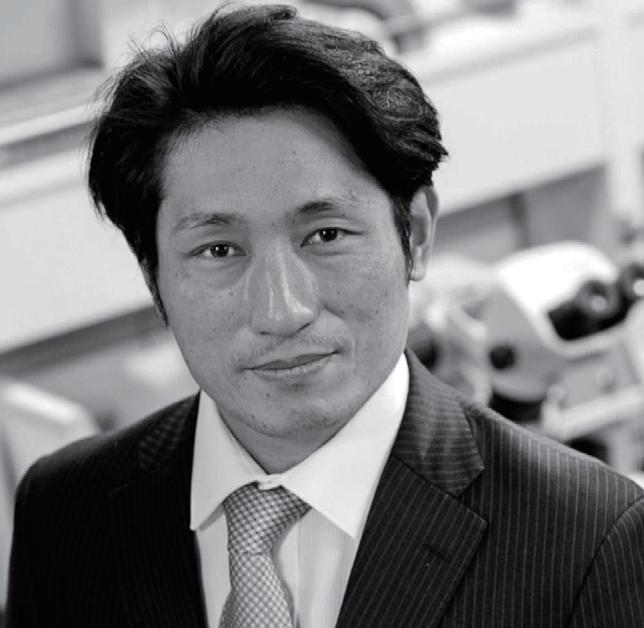
健康的に楽しく歳を重ねること
健康的に楽しく歳を重ねることは、誰もが望むことで あると思います。すべての方がそれを実現するために は、何が大切でしょうか?現代社会は高度な科学技 術に支えられ、物理的には極めて豊かになりました が、これからは精神的な豊かさに対する価値観が高 まります。ヒトに寄り添い、ヒトをより深く精神的なレ ベルまで理解することが大切です。ヒトの心に寄り添 う科学技術を実現することが、ヒトと機械の【真の融 和】を導くと確信しています。これからも人の心に寄 り添える科学技術を生み出したいと思います。
Professor of General Practice,
School of Medicine, University of Crete, Greece クレタ大学(ギリシャ) 薬学部
一般診療教授
Ageing, a unique source for learning the secrets for health and eudaimonia. An excellent pool of hidden knowledge that contains certain important keys for a successful ageing. Our research in Greece revealed the key characteristics of longevity, including a favourable adherence to the Mediterranean diet, mid-day naps and smoking cessation. In parallel, a series of cross-sectional studies carried-out in the old population of Crete discovered certain important health assets, including that of sense of coherence and spirituality. Ageing research could be an important investment to improve health and reduce vulnerability in the times of pandemic.
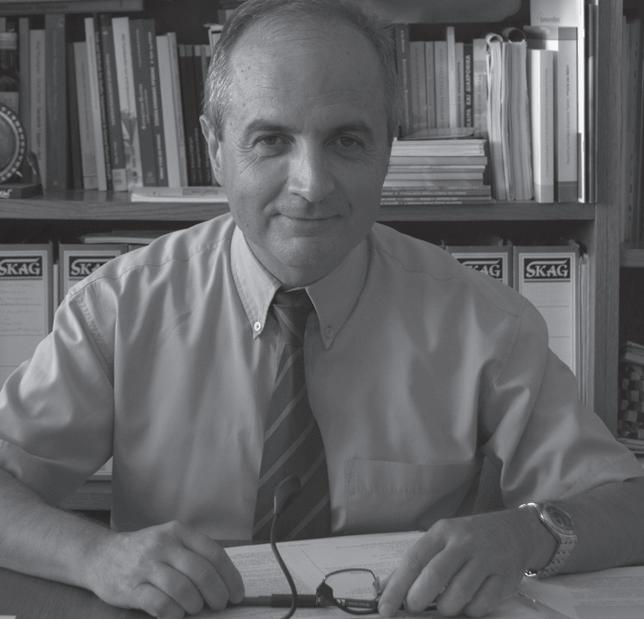
健康や幸福の秘密を学ぶ上でまたとない情報源で ある老化には、まだ知られていない知識がたくさん あり、その中には上手に年を取るための大切なカギ があります。ギリシャで行った我々の研究では、地中 海の食生活や昼寝や禁煙など、長寿のカギとなる特 性が明らかになりました。またクレタ島の高齢者に 行った研究では、連帯感や精神性など健康でいるた めの重要なポイントが分かりました。パンデミックの 時代、老化に関する研究は、健康改善や脆弱性低下 のための重要な投資となるでしょう。
Professor of Smart Tourism at Bournemouth
University Business School, United Kingdom
ボーンマス大学ビジネススクール(英国)
スマートツーリズム教授
The pace of ageing is also increasing dramatically and emerges as a global challenge. Along with the population ageing, societies worldwide have paid extensive attention to various approaches that could enhance seniors’ quality of life. Active ageing has gained increasing attention from the academia, government and service industry in the past 20 years. The World Health Organisation in 2002 defined active ageing as ‘the process of optimising opportunities for health, participation and security in order to enhance quality of life as people age’. Active ageing research has relevant insights in the fields of gerontology and ageing, public policy studies, health and psychology.
Active ageing heavily depends on various influences and determinants surrounding this population, which include activity, service and support providers, as well as social and physical environments. The tourism industry provides various opportunities for seniors to engage in recreational, entertaining, social and business activities. Multiple facilities, such as national parks, leisure centres, museums, hotels and guesthouses, restaurants, cafes and travel agents are available to all and aim to attract senior customers. For older people, with discretionary time and income, leisure and tourism activities become important components of their wellness. For the tourism industry, the older adult market is becoming increasingly attractive and as a critical market for resilience. The growing number of older people provides more business opportunities for services and products that can leverage seasonality, compared with the family market. Therefore, tourism service providers should investigate the seniors’ needs and provide activities and experiences that best fulfil their requirements.

高齢化のペースが劇的に加速し、世界的な問題と なっています。高齢化に伴い、世界は、高齢者の生活 の質を向上させる様々なアプローチにさらなる注意 を払ってきました。アクティブな老化はここ20年で、 学界、政府、サービス業界からますます注目を集め ています。世界保健機構は2002年にアクティブな 老化とは「人々が年を取るにつれて生活の質を高め る、健康、参加、安全の機会を最適化するプロセス」 と定義しました。
アクティブな老化に関する研究では、老年学と老 化、公共政策に関する研究、健康と心理学の分野に 関連する洞察が示されています。人々を取り巻く様 々な影響と決定要因で大きく変わっていくのがアク ティブな老化です。活動、サービス、サポートプロバ イダー、社会的および物理的環境がこの中には含ま れます。観光業界では、高齢者がレクリエーション、 エンターテイメント、社会活動や事業活動に従事で きるよう様々な機会を提供しています。国立公園や レジャーセンター、博物館、ホテルにゲストハウス、 レストラン、カフェ、旅行会社などの複数の施設をす べての人が使用できるよう、高齢者の顧客の興味を 引こうと模索しています。高齢者にとって時間と収入 は自由裁量であり、レジャーと観光活動は彼らにと って健康を維持する重要な要素になります。観光業 界にとって、高齢者はますますうまみのある年代と なり、成長には欠かせない市場となっています。ファ ミリー市場と比較して、高齢者の増加は季節性を活 かせるサービスや製品のビジネスチャンスが増えま す。そのため、観光サービスプロバイダーは高齢者の ニーズを調査し、彼らの要件を最も満たせる活動と 体験を提供する必要があります。
AFEdemy - Age-Friendly Environments Academy
Founder
(年齢にやさしい環境アカデミー)創設者

Never too old to learn is a cliché
Never too old to learn is a cliché, but so true. Learning new things brings a lot of joy and success to me and my company AFEdemy in which we focus on capacity building of stakeholders to implement Smart Healthy AgeFriendly Environments.
I was 55 years of age when I started for my own. Since then I learned to know many new interesting people, networks and also got new skills. It keeps me active and going.
My advice is: lifelong learning!
学習するのに遅すぎることはない
学習するのに遅すぎることはないという決まり 文句がありますが、これは事実です。スマートで 健康な、高齢者にやさしい環境を目指し、ステ ークホルダーの構築能力に焦点を当てた私の 会社のAFEdemyでは、新しいことを学ぶこと で多くの喜びを感じ、またそれが成功につなが りました。
55歳の時に起業しましたが、それ以降たくさん の興味深い人々と知り合い、ネットワークづくり もでき、また新しい技術も習得しました。このお かげでいつも活動的に前進できます。
人生常に学習!というのが私のアドバイスです。
SHINE 2Europe, CEO
Adaptable and age-friendly, smart solutions can help improve and support independent living throughout the life course, independent of age, gender, impairments, cultural differences and personal choices. A holistic approach that optimises peoples’ social and physical environments, supported on digital tools and services delivering better health and care, improves not only independent living, but also equity and an active participation in society.
The United Nations stated, with the Sustainable Development Goals (in particular Goal 3 and 11) that sustainable age-friendly environments represent the baseline for guaranteeing a better future for the whole population and for addressing most of the growing ageing population issues.
In Europe, considered as the most ageing continent of the world, this concept is of great interest. However, a huge share of the building stock is not adapted to permit ageing in place and bringing new solutions to market is still challenging.
SHAFE aims to foster awareness and support to the creation and implementation of smart, healthy indoor and outdoor environments for present and future generations that will enable citizens to learn, grow up, work, socialise and enjoy a healthy life, by benefiting from the use of digital innovations, smart living and accessibility solutions and shared assistive models adaptable within the European setting.

スマートで健康な年齢にやさしい環境 順応性があり、高齢者に優しいスマートな解決策が あれば、年齢、性別、障害、文化の違い、個々の選択 に関係なく、生涯にわたって生活改善でき、自立し た生活を送ることができます。デジタルツールや健 康ケアを提供するサービスと全体論的アプローチ で人々の社会的かつ物理的環境を最適なものにす れば、自立生活だけでなく平等性や社会への積極 的参加も良好になります。持続可能な開発目標(特 に目標3と11)を掲げる国連は、持続可能で高齢者 にやさしい環境が基軸となり、全人類の未来がより 良いものになり、高まる高齢者問題の多くに対処で きると語っています。
世界で最も高齢者が多い大陸とされるヨーロッパで、 人々はこのコンセプトに高い関心を示していますが、 建築ストックの大部分は高齢者に適しておらず、市場 に新しい解決策を提示するのはまだまだ困難です。
SHAFEの目標は、現在そして未来世代のためにスマ ートで健康的な屋内外環境を構築し、それを実行す ることの大切さを人々に気づいていただき、それを支 援することで、我々が学び、成長し、働き、社会と関わ り、健康的な人生を楽しむことができるようにするこ とです。デジタル革新やスマート生活、アクセサビリテ ィーソリューションを利用し、ヨーロッパにおいて適 応可能な共有支援モデルで、それは可能になります。
Associate Professor of Architecture at the School of Architecture, Tianjin University, China
天津大学(中国) 建築学部 建築学助教授
Undoubtedly, East Asian countries are already or stepping into an ageing society, although it might be perceived as a blessed sorrow. In China, we need to pay special attention to the rapid changing population structure, the traditional ageing support culture, and even the urbanization as well. The typical issues may include: grown up children (especially the eldest son) have the responsibility to live with and support their parents in the traditional culture; the young generation migrate to urban areas while still leaving their parents in the rural areas; the generation under one-child policy get marriage and have to support four seniors and two children, etc.
Facing all potential economic and social changes, we need to accept new concepts and explore new models. First, advocate the concept of healthy ageing and active living in society; ageing is not only for the seniors, it happens all through life. Second, build an integral service system for ageing that includes elderly care, rehabilitation, nursing, and medical care. Third, integrate intelligence technology into daily lives of ageing to monitor and guide, and even pre-judge and/or alert the physical conditions and behaviors in safety and effectiveness.
In 2019, I started the research project Evidence-Based Design on Healthcare Architecture in China, which is funded by the Natural Science Foundation of China (Youth Program). The healthcare architecture includes facilities that provide medical services, e.g., hospitals and clinics, and facilities designed for seniors. Especially after the Covid-19 pandemic, our team visualized the epidemiological data of the total confirmed cases in Tianjin, China and two case studies from Tianjin and Beijing, confirmed the importance of community compared to city and building from the perspective of public health. The community could be and should be an active hub, where it connects residents and encourages physical activities and social events happen; in a long term, it would make positive health effects on ageing and even for the whole age group. As the next step, I will work on building the environmental risk factor - spacebehavior model at the community level and explore how to integrate the medical, nursing, and rehabilitation services and facilities for ageing.
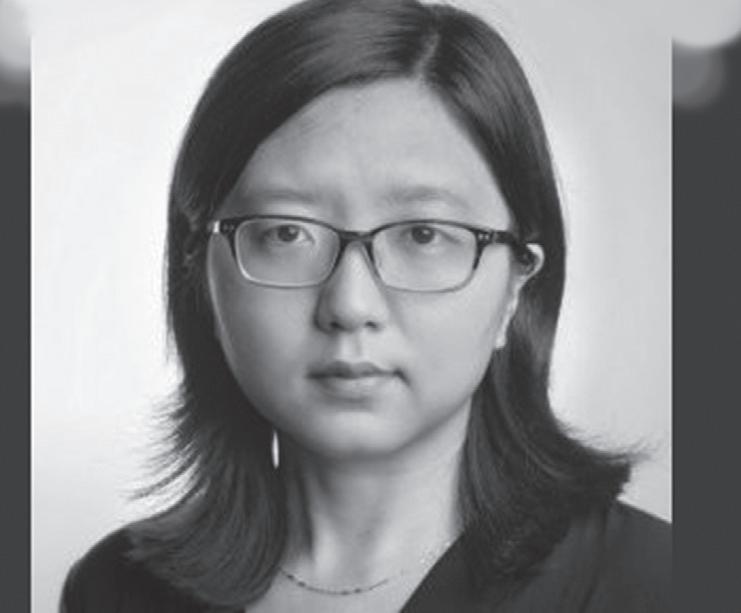
東アジア諸国はすでに高齢化社会になっている、あ るいは足を踏み入れているのは確かですが、老化と は、有り難いが悲しい現象として認識されているか もしれません。中国は、急速な人口構造の変化やこ れまでの高齢化支援文化、さらには都市化にも特 に注意を払う必要があります。成人した子供(特に 長男)は伝統文化の中で両親と一緒に暮らし両親を サポートする責任がある、若い世代が両親を田舎に 残し都市部に移住する、一人っ子政策世代が結婚 し、4人の親と2人の子供を支援しなければならない ということが典型的な問題として挙げられます。
潜在的な経済/社会変化全てを直視し、私たちは新 しい概念を受け入れ、新しいモデルを探求する必 要があります。まずは、健康的に年をとり、社会で元 気に暮らすという概念を提唱します。老化とは高齢 者だけではなく、生涯を通じて起こる変化です。第2 に、高齢者介護、リハビリテーション、介護、医療等、 高齢化のための統合サービスシステムを構築しま す。第3に、知的技術を高齢者の生活に統合し、安全 性と有効性について身体状態と行動を監視・主導 し、さらに事前に判断および/または警告します。
私は2019年に中国の自然科学財団(青年プログラ ム)が資金提供する、中国の医療建築に関する証拠 に基づくデザインの研究プロジェクトを始めました。 ヘルスケア建築には、病院や診療所などの医療サー ビスを提供する施設と、高齢者向けの施設がありま す。特にコロナ後、私たちのチームが中国天津で確認 された全症例の疫学的データと、天津と北京の2つ の事例研究を視覚化し、公衆衛生という視点から都 市部や建物を比較してコミュニティの重要性を確認 しました。コミュニティは住民をつなぎ、身体活動や 社会的イベントを促すアクティブなハブになる場合 があり、またそうあるべき存在です。長期的には、そ れが老化、さらには全年齢層にプラスの健康効果を もたらすことでしょう。次のステップとして、コミュニテ ィレベルで環境リスク要因(空間)行動モデルを構築 し、医療、介護、リハビリテーションのサービスと老化 のための施設を統合する方法を探ろうと思います。
Co* Design Center, Osaka University 大阪大学 COデザインセンター 特別講師
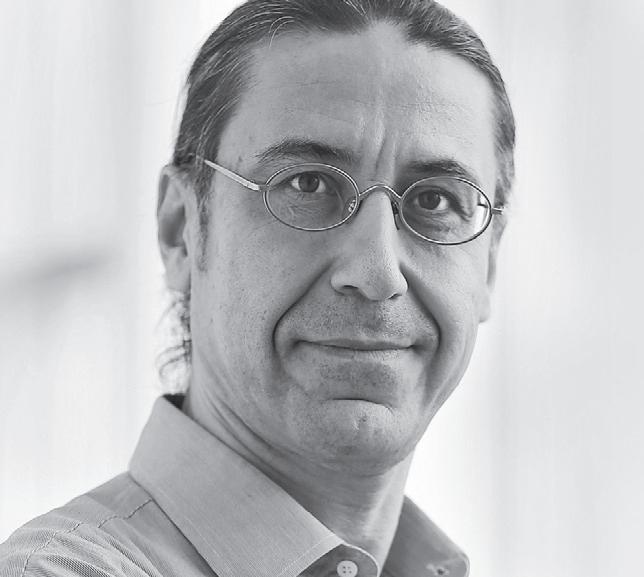
Among the challenges that we are facing today, the aging population and the declining birthrate are high on the list. While many advanced economies also look for a way forward, we believe that Japan outperforms in these areas, thus should take a leading role in response. The developments around these challenges have already impacted various aspects of life and work in Japan. Labour shortages or a shrinking workforce make it difficult to maintain productivity, and there are calls for additional measures to promote employment, such as the expansion of foreign labour, and the promotion of artificial intelligence. The impacts are particularly acute in rural Japan. Most towns and villages have dilapidated farms and abandoned houses, schools are empty and their playgrounds quiet. Nearly 900 of these towns and villages across the country are predicted to become extinct by 2040, as the young female (aged 20-39) population declines by 50 percent and youth migrate to the cities.
For the last few years, we have been working in one of those rural towns located on the northern edge of Osaka Prefecture. In 2017, Nose Town and Osaka University signed a comprehensive agreement on education, research, culture, and urban planning. Both parties pledged to promote cooperation within the local community and to contribute to development and revitalization by using their respective resources. We have been organizing fieldworks, internships, practicebased education and research programs aiming to solve various issues with a slow approach to innovation and to co-design a sustainable and prosperous Future of Satoyama that utilizes and develops local resources. In 2020, a grassroots publication of ours, Mura - A Place for Design Practice was released in collaboration with Osaka University's Co* Design Center and IIDj, Institute for Information Design Japan.
We believe that our work responds to the many challenges of an aging community that faces exodus of the younger generation to the big cities, and can help nurture innovative human resources who can identify the essence of these challenges and think about the ways to solve them through collaboration with local communities.
振り返り:私の「老化」に対する見方 今日私たちが直面している課題の中でも、高齢化と少 子化がリストの上位にあります。多くの先進国が模索す る中、私は日本はこれらの分野で優れていると信じてい ます。ですので、それに応じた主導的な役割を果たすべ きではないでしょうか。
これらの課題を取り巻く日本では、生活や仕事の様々 な面ですでに影響が出ています。労働力不足や減少が 原因で生産性を維持するのが困難になり、外国人労働 力のさらなる採用や人工知能の推進など、雇用を促進 するための追加措置が求められています。
特に日本の地方では影響が顕著になっています。ほと んどの町や村では老朽化した農場や廃屋があり、学校 は人がほぼおらず、遊び場は静かです。若い女性(20 ~39歳)の人口が50%減少し、若者が都市に移住する ために、日本全体の900ほどの町や村が2040年まで になくなってしまうと予測されています。
ここ数年、大阪府北部にある田舎街で私たちは研究を 行っています。2017年には、能勢町と大阪大学で、教 育、研究、文化、都市計画に関する包括的な協定を結び ました。両者は地域社会内で協力し、それぞれの資源 を活用することで、地域開発や活性化に貢献すると約 束しました。
様々な問題を解決するため、フィールドワーク、インター ンシップ、実践ベースの教育や研究プログラムを行い、 地元資源を利用・開発し、持続可能で繁栄する「里山の 未来」を協力して設計し、革新へゆっくりアプローチし ています。2020年には大阪大学COデザインセンター とInstitute for Information Design Japan(IIDj)が 共同し、私たちの草の根となる出版物「村は、デザイン 実習の場!」を発行しました。
私たちの研究は、若い世代が大都市へ流出している高 齢化コミュニティの課題の多くに取り組み、地域コミュ ニティと共同して革新的な人材を育成すれば、それら の課題を解決する方法を考えることができると確信し ています。
Senior Lecturer in Built Environment
(Architecture) at the University of Derby ダービー大学 構築環境 シニア講師
As a teacher and researcher in the Built Environment (Architecture), I always pledged on World Health Organisation recommendations to support ‘active ageing by optimizing opportunities for health, participation and security to enhance quality of life as people age’. In recent years my research focused on age-friendly cities, and especially on planning age-friendly neighbourhoods in areas of urban space decline. In 2016 I was approached by Derby Homes in Derby to participate in surveys on housing and services in two wards in Derby: Normanton Pear Tree and Arboretum; I was supported and shared research with undergraduate and postgraduate students. We had the opportunity to engage with local communities and proposed solutions to transform urban areas into healthier and fully inclusive places to live. We also discovered that elderly people were living secluded lives in poor housing conditions.
As a member of our University of Derby research cluster, I had the opportunity to apply in teaching and research projects ideas of revitalising urban space to change human behaviours. Thus, since then and as an expert in Biourbanism, I have been working on research supported by student projects to be able to promote inclusive urban spaces without barriers for vulnerable ageing populations, and especially people living with dementia. Now we are working towards proposals for changes to urban planning policies, so that every citizen could use and enjoy urban spaces without barriers. Every citizen should have the right to always use and enjoy blue and green infrastructure. We hope to be heard and understood.
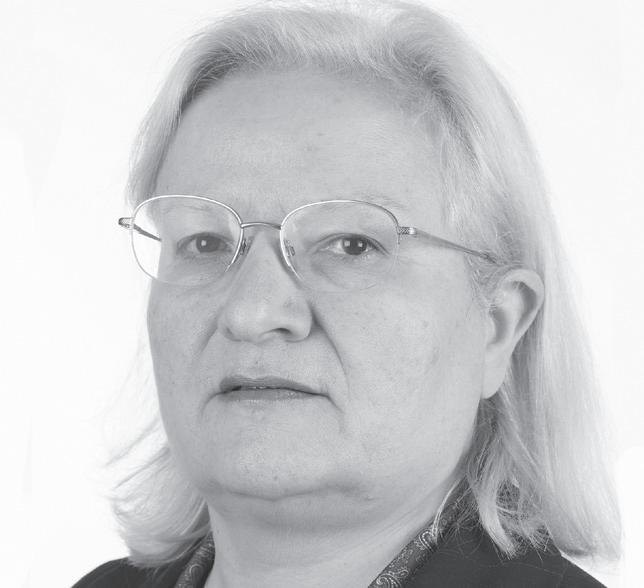
構築環境(建築)の教師兼研究者として、「年齢を重 ねながら生活の質を高めるための、健康、社会参加 や安全の機会を最適化し、アクティブに年を取る」こ とをWHOに常に進言してきました。近年、高齢者に 優しい都市、特に都市で衰退している地域を高齢者 に優しい区域にする研究をしています。2016年、ダ ービーを拠点とするダービーホームから、ダービー のノルマントンペアツリーとア-ポリータムという二 つの区域の住宅やサービス事情の調査に参加しな いかとお声をかけていただき、私は大学生と大学院 生と共に研究を進め、ローカルコミュニティーと連 携して都市エリアを健康的で暮らしやすい包括的 な場所に変革させるという提案をまとめました。ま た、私たちは、高齢者は隔離された状態で手入れが 行き届いていない住宅で生活していることが分かり ました。
ダービー大学の研究グループメンバーとして、人間 行動を変化させるための都市スペース復興に関す る教育や研究プロジェクトを立ち上げました。それ 以来、そしてバイオアーバニズムの専門家として、弱 者である高齢者、特に痴呆を患っている人々にとっ て障壁のない包括的な都市空間を促進できるよう、 学生のプロジェクトにサポートしてもらいながら研 究を続けています。市民一人一人が障害もなく都市 空間を使用し楽しむことができるよう、現在は都市 企画の政策を変えるため提案できるように尽力して います。水場や植物のエリアを使用し楽しむことは 市民全員の権利です。私たちの声が皆さんに届き理 解されることを願っています。
Osaka University
大阪大学 特別講師
Global ageing is a challenge for modern individuals, who seek autonomy, in need of interdependent living communities where social supports are available not limited in local but remote settings. My research explores the ways which lead people to empower their ability to respond to one another and argues how the productive knowledge of art and technology can contribute to empowering their response-ability. Social isolation of older adults is one of the leading issues in healthcare promotion.
Telecommunication support is expected to be provided by robotic media that might facilitate social interaction both verbally and nonverbally. Problem-solving through new technologies is an opportunity not only to research how social isolation can be mitigated, but how new relationships can be fostered. As an assistive technology, I proposed to employ Embodied Communication Technology (ECT) such as Telenoid android robot. Some results from my research demonstrated that people with dementia could change their behavior, becoming open and prosocial through robotic mediation. In the future when family members of the patients are willing to teleoperate a robot, healthcare professionals may need to instruct them in effective ways of communication and how to utilize the robotic ECT, resulting in a call for a new type of education and teaching together with a view into ethical aspects of robotic care.
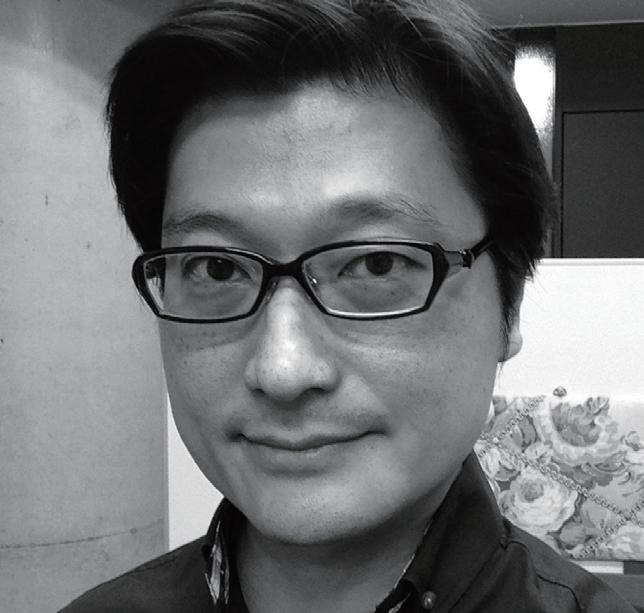
ロボットメディアによる高齢者のケア
世界における高齢化は自律性を求める現代人にとっ ての課題であり、地域/社会支援だけでなく、遠隔地 でも利用できる相互依存の生活コミュニティが必要 とされています。私の研究では、人々がお互いに反応 する能力や、芸術と技術の生産的な知識が高齢者の 反応能力を強化することにどのようにつながるのか を探求しています。高齢者の社会的孤立は、ヘルスケ ア推進における主要問題の1つです。
テレコミュニケーション上のサポートでは、言語的お よび非言語的両方の社会的相互作用を促進しうる ロボットメディアによる提供が期待されています。新 しいテクノロジーを介して問題を解決すれば、社会 的孤立を緩和する方法を研究できるだけでなく、新 しい関係性を育む方法を研究する機会にもなりま す。支援技術として、テレノイド・アンドロイドロボッ トなどの身体的コミュニケーション技術(ECT)の採 用を私は提案し、研究の結果、認知症の人々がロボ ットを通じて行動を変化させ、オープンで向社会的 になることも証明されました。将来患者の家族がロ ボットを遠隔操作したいと思えば、医療専門家から 効果的なコミュニケーション方法とロボットECTの 利用方法の指導が必要になる可能性があり、その結 果、新しいタイプの教育と、ロボットによるケアの倫 理的側面に関する見解の教育が必要になるかもし れません。
シェフィールド大学 建築学部 助教授
My research is concerned with supporting the creation of liveable environments for all users such that human interactions with the built environment happen with reduced effort and increased efficiency. My research explores the multiple levels at which people interact with the built environment and how architectural design features of the built form contribute to human health and wellbeing. I believe that the notion of ‘maintaining independence at home’ must be understood broadly as a place where people can live, learn, work, play and grow old. The built environment, including public open spaces and other external environments, is known to influence people’s various social and physical processes and to have an impact on health outcomes. It is my conviction that future research should focus on the current discourse of age-friendly environment and healthy cities, which is concerned with the physical, social, economic, cultural and spiritual determinants of health and the essential elements necessary to improve people’s health and the environment, with a focus on older people. Similarly, the concept of age-friendly environment and healthy cities does not represent a particular ‘end state’ of the built environment and healthy cities, but rather an awareness of health and wellbeing as an ongoing goal of improving the physical conditions in which people live, with the ultimate aim of achieving health for all in contemporary urban contexts. As countries and cities are unique, it is important to take into consideration societal and cultural norms and community requirements to ensure the creation of a social and physical environment where older and younger people feel safe and comfortable to live in.
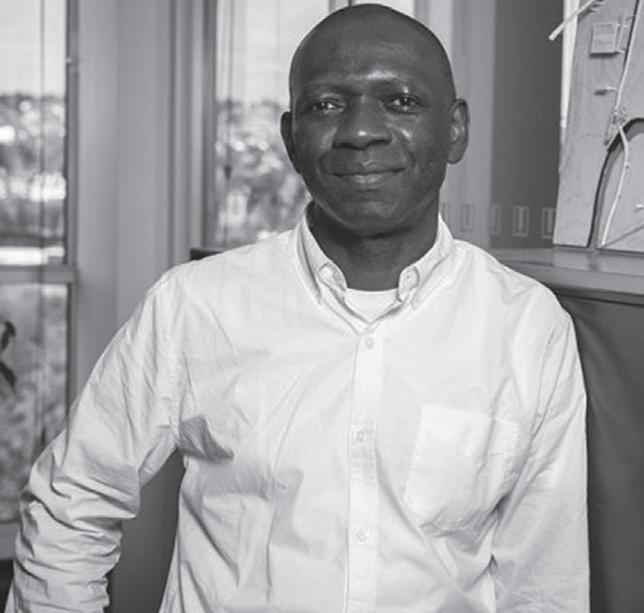
私の研究は、全てのユーザーにとって住みやすい構 築をサポートし、構築環境との関わりが、少ない労 力で効率よく行うようにすることです。人々と構築環 境の関係性を様々なレベルで調査したり、構造物の 建築デザインの特徴が人間の健康や幸福度にどの ように貢献するかも調査しています。「家での自立性 を維持する」という概念は、人々が住み、学び、働き、 遊び、そして年を取ることができる場所として一般に 理解されるべきと考えています。公共のオープンスペ ースや他の外部環境等の構築環境は、人々の社会 且つ身体的活動に影響を与え、健康にも影響を与 えることは知られています。今後は、高齢者に焦点を 当て、高齢者にやさしい環境と健康都市をメインに 研究していく予定です。これは、人々の健康や環境を 改善するために必要な基本要素、そして健康でいる ための物理的、社会的、経済的、文化的、精神的決 定要因に関係します。同様に、高齢者にやさしい環 境と健康都市の概念とは、構築環境と健康都市の「 最終状態」を表しているのではなく、むしろ、現代都 市ですべての人が健康でいるということを最終目的 として掲げ、健康改善の継続目標として健康と幸せ を捉えるというものです。国や都市はそれぞれ違う ので、社会的、文化的規範、コミュニティの要件を考 慮し、老若男女が安全で快適に暮らせる社会環境 や物理的環境を確実に作り出すことが重要です。
Post-war Architectural and Urban Heritage for Active Ageing at the University of Liverpool リバプール大学
アクティブな老齢化のための戦後の建築/都市遺産
Post-World War II architectural and urban heritage probably sounds like an unlikely topic to include in a conversation about ageing. However, several studies to date have explored the impact of cultural heritage on human wellbeing. These usually focus on mental wellbeing and explore the benefits of heritage site and museum visits or volunteering. Nonetheless, public engagement with architectural and urban heritage is also increasingly flourishing and it often includes the most recent period from the post-World War II period to the present that is often considered controversial - or even denied, by many, its very categorisation as “heritage”.
However, the opportunities this controversial heritage offers for active ageing remain largely overlooked. This most recent of our built heritage is part of the living memory of contemporary ageing populations and it also continues to be part of their everyday environment. Those memories and first-hand experiences can trigger intellectual and emotive involvement, whereas participation in city tours or visits to buildings offer the opportunity for a more active, yet not necessarily strenuous, physical engagement. Combined together the complementary natures of such pursuits represent an easily adaptable and low-cost activity model for active ageing that can be particularly beneficial to ageing individuals.

第二次世界大戦後の建築/都市遺産というと、老化 には関係ないと感じるかもしれません。しかし今日 までの研究では、文化遺産が人間福祉にどのように 影響するのかを論じています。これらの多くは精神 的福祉に焦点を置いており、遺産や博物館訪問や ボランティア活動のメリットを研究しています。とは いえ、建築/都市遺産と人々のかかわりも徐々に増 加し、その遺産には第二次世界大戦後から現在ま での新しい時代のものもあります。このような遺産 を多くの人は所謂「遺産」には含まないと考えたり、 否定する人も少なくありません。
しかし、物議となるこのような遺産がアクティブな老 齢化に寄与するという事実はあまり知られていませ ん。最近の構築遺産は、現代の高齢者の生きる記憶 の一部であり、彼らの毎日の生活の一部であり続けま す。この記憶と体験は知的で感情的な関わりを引き起 こす一方、シティーツアーに参加したり、建築物を訪 問することで、よりアクティブでそれほど骨を折ること もなく実際に関わりを持つことができます。この2つを 組み合わせることで、追及したいという補完的性質が 明らかになり、特に高齢者にとってプラスになる、適応 しやすく費用のかからない活動モデルになります。
Marie Skłodowska-Curie Fellow
マリア・サロメア・スクウォドフスカ=キュリーフェロー
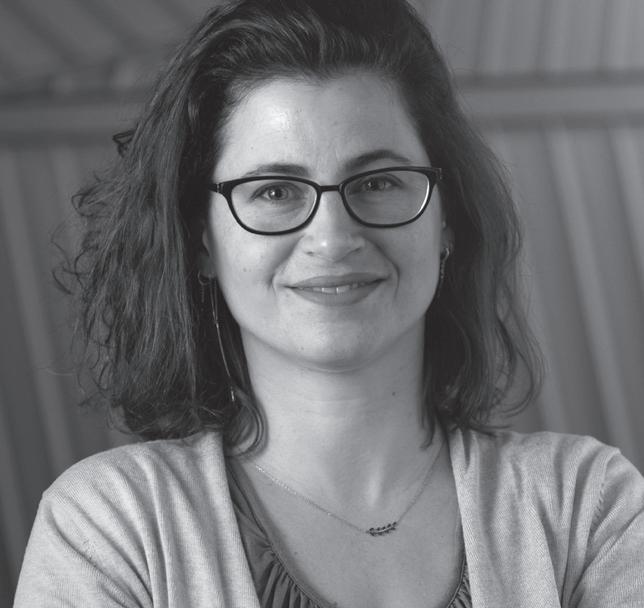
Older populations who move to institutional settings loose their self-autonomy and dignity along with their homes. This is especially true in nursing homes that provide shared rooms to its residents as the only option. Interviews conducted by architecture students, as part of user-centered design research course at the Technion university, in a nursery home in Haifa articulates the ways in which sharing a room can effect residents’ autonomy over their space and body.
For instance, a female resident stated that she had to share a room with a roommate who doesn't knock on her door when she is changing clothes in the bathroom. A male resident who can't easily fall a sleep told that he couldn’t keep the light or TV on in the evening as it would disturb his roommate's sleep.
As these examples demonstrate, decisions we take for granted while living in our homes such as having autonomy over the lighting conditions, thermal environment and privacy over our bodies can easily turn into a struggle, cause of tension and loss of fundamental needs, in shared settings with other older roommates. A careful analysis of living patters and needs, and matching the environmental design accordingly can easily alleviate a number of these difficulties.
施設などに入った高齢者は自宅を失うとともに、自 律性と尊厳を失う。これは特に、相部屋しかない老 人福祉施設に当てはまる。テクニオン・イスラエル工 科大学のユーザー中心設計研究課程の一環として、 建築学生らがインタビュー調査を実施した。ハイフ ァの老人福祉施設で行った当該調査の結果、相部 屋の利用が空間と身体の面で入居者の自律性に影 響を及ぼす可能性があることが明らかになった。 例えば、ある女性入居者は、浴室で着替えをしている ときにノックをせずに入ってくる同室者と同じ部屋 で暮らさなければならないと述べた。また、寝つきが 悪いある男性入居者は、同室者の眠りの妨げになる ため、夜間に電気やテレビをつけたままにしておくこ とができないと話した。
これらの事例から分かるように、照明の状態、室内の 温度、自分の身体にかかわるプライバシーを巡り、自 律性を持つことなど自宅で暮らしている間は当たり 前だと思って決めていることが、相部屋では争いや 敵対意識をもたらす原因、基本的ニーズの喪失を容 易に招く場合がある。生活パターンとニーズを慎重 に分析し、その結果に合わせた環境設計を行うこと で、このような数多くの難しい問題を簡単に軽減で きる。
Design Researcher at the Darmstadt University of Applied Sciences, Germany
ダルムシュタット専門大学(ドイツ)
デザインリサーチャー
Humans are partly shaped by their social and cultural contexts as well as their individual life experiences. These interdependences of individual and specific context is what makes people unique and creates a tacit knowledge that is not retrievable through literature or intuition. Designing effective and useful systems, services and built environments requires therefore a rigorous and complex understanding of the specific characteristics, needs and abilities of all stakeholders related to the context for which the design is meant. While both an evidencebased design approach as well as a creative mindset are needed to foster innovative and adequate concepts, only the active participation of stakeholders throughout the design process ensures a genuine and authentic perspective onto the subject at hand. Considering stakeholders by applying a co-creative mindset enables designers and architects to step away from their own preferences and appreciate the specific needs of the groups for which they are actually designing. This applies in particular to vulnerable people and people whose life context is remote from the daily experiences of the designers and architects. Taking the traditional approach of user-centred design seriously, implies to actively strive for and consequently respect the users point of view concerning the design context even if it appears to be inferior to one’s own ideas and concepts. As long as designers and architects are not part of the target group they are obliged to be rather facilitators and enabler than to be problem solvers.

健康と福祉を設計する推進力としては 弱い、無意識的共有意識
人間は、自身の人生経験や社会/文化的背景によっ て形成されます。個人と人生の特定のシーンの相互 依存が個々をユニークな存在にさせ、文学や直感で は取り戻すことができない無意識的共有意識を作 り出します。そのため、効果的で有用なシステム、サ ービス、構築環境を設計するには、設計の背景に関 係する利害関係者の特質、ニーズ、能力を厳密かつ 複雑に理解する必要があります。証拠に基づくデザ インアプローチと想像力の両方が革新的で適切な 概念誕生に必要である一方、デザインの全工程に 利害関係者が積極的に参加してくれさえすれば、偽 りのない、確かな視点で目の前の対象を見る事がで きます。デザイナーや建築家が共創的な考え方で利 害関係者について考えれば、自分たちの好みとは異 なる、実際にデザインしているグループのニーズを 理解することができます。これは特に、生活環境がデ ザイナーや建築家の日々の経験とかけ離れている人 々や弱者に該当します。ユーザー中心の伝統的な設 計アプローチを真摯に受け止めることは、たとえそ れが自身のアイデアやコンセプトに劣るように見え たとしても、デザインコンテクストのユーザー視点を 尊重することになります。デザイナーや建築家が対 象グループに属していない限り、彼らは問題解決者 になるというよりもむしろ、それを促進する、それを 可能にする人であるべきです。
Architectural Designer for
Aged Care Housing in New Zealand
高齢者ケアホーム建築家(ニュージーランド)
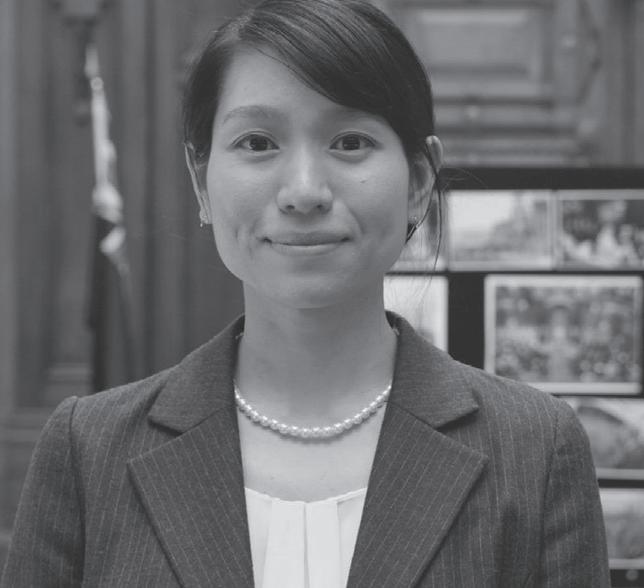
How can housing design maximise quality of life for the ageing when care needs increase? One of the key factors is the importance of attention to detail where micro space is concerned, enabling occupants to live independently. Another is ensuring housing is able to accommodate guests, gatherings and belongings, specific to each individual’s needs. Providing access to the north sun (in New Zealand) is also essential when mobility declines.
The highest quality of life cannot be achieved without incorporating a variety of design requirements. Research on the quality of life of 30 seniors has revealed the ramifications of poor designs. Architects and housing designers are responsible for ensuring occupants’ complex and often conflicting needs are met, which challenges the common belief that ‘design is compromise.’
さらなるケアが必要になった時、住宅設計はどのよう に高齢者の生活の質を最高レベルまで高めることが できるでしょうか?重要な要素の1つは、ミクロ空間 が関係する細部にも注意を払い、居住者が自立して 生活できるようにすることです。もう1つ、個人のニー ズに合った住居でゲストを迎えることができる、会合 を開くことができる、持ち物を収容できるようにする ことです。機動性が低下した時に備えて、(ニュージー ランドでは)北側の部屋の日当たりも不可欠です。
様々な設計要件を組み込まずに最高の生活の質を達 成することはできません。30人の高齢者の生活の質 を研究した結果、貧弱な設計が影響することが分か りました。建築家と住宅設計者には、居住者の複雑で 矛盾するニーズを満たす責任があります。「設計は妥 協」であるという一般的な考えに異議を唱えます。
European University of Madrid
エウロペア・デ・マドリード大学
The quality of ageing is mainly concerning disability, cognitive function, depression episodes, other adverse chronic conditions, and social engagement in life. Long-term endurance exercise has shown to have a protective effect on telomere length of peripheral blood cells, a biomarker of cellular ageing well-established. Indeed, exposure to physical inactivity throughout the life span may contribute to ageing processes, and ultimately a greater chronic disease risk in the adulthood. With levels of physical activity decreasing gradually with age, how to manage the sedentary behaviours among older people in their living environments has become a major public health challenge.
Many systematic studies have evidenced the potential role of built environment factors, such as walkable neighbourhood designs, on the physical activity outcomes among older adults. Although largest benefits came from moderate-to-vigorous physical activity, even low doses shown effectiveness in reducing allcause mortality in the population older than 60 years, the integration of this type of exercise has had less attention in the built environment research. Collaborations between public health, exercise science and healthcare services along with built environment professionals to identify the attributes of the urban and residential environments associated with health-enhancing levels of moderate-to-vigorous exercise are imperative for active and successful ageing.
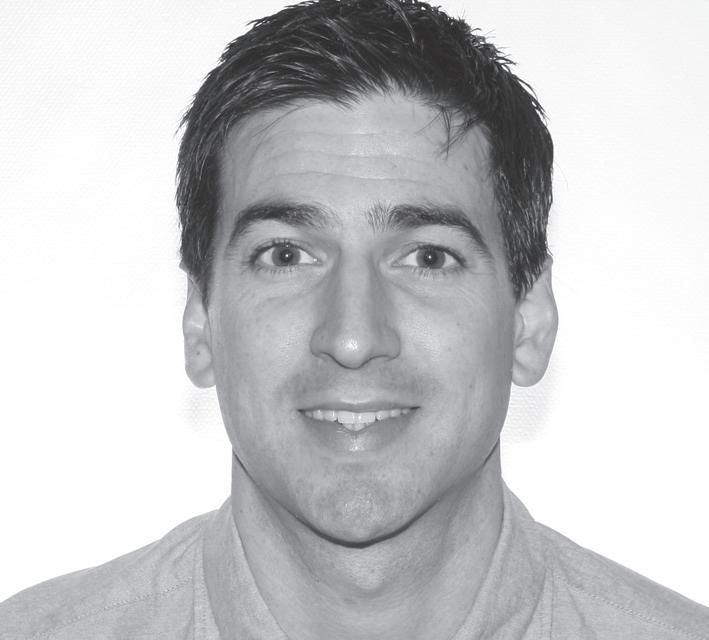
上手に、そしてアクティブに年を重ねる ための構築環境と身体活動の役割
老化の質は主に障害、認知機能、うつ病の発症、その 他有害な慢性状態、そして日々の社会との関わりに 関係しています。長期的に持久力運動をすると、細胞 老化のバイオマーカーである末梢血細胞のテロメア の長さに保護効果をもたらします。実際、日々の運動 不足が老化を早める場合があり、最終的には成人期 の慢性疾患のリスクが高まる可能性があります。年 齢とともに身体活動のレベルは徐々に低下するため、 生活の中で座りがちな高齢者の行動をどのように管 理するかが公衆衛生の大きな課題となっています。
多くの系統的研究では、近隣を歩きやすい環境に 設計するなど、高齢者の身体活動に関する構築環 境要因の潜在的な役割が明らかになっています。中 程度から激しい運動が最もプラス効果があります が、60歳以上の全死因死亡率を減らすには軽めの 運動でも効果があります。しかしこのタイプの運動 を統合することは構築環境の研究ではあまり注目さ れていませんでした。中程度から激しい運動の健康 増進レベルに関係する都市や住宅環境属性を特定 するためには、公衆衛生、運動化学、ヘルスケアサー ビスや構築環境の専門家と協力することが、アクテ ィブに、そして上手に年を重ねる上で不可欠です。
The Bartlett School of Sustainable Construction, University College London ユニバーシティ・カレッジ・ロンドン バートレット校 持続可能建設
Despite remarkable improvements in life expectancy, the population ageing is characterized by heterogeneous health profile and presence of chronic disorders. Globally, Covid-19 home confinement period along with the expected rise of older people living with a history of cancer and other comorbidities has emphasized the potential contribution of residential spaces on the health outcomes. This ageing-related morbidity burden places high demand on healthcare infrastructures and resources. Housing facility is being increasingly recognised as an entry healthcare component for public health programmes and primary care and community-based outpatient rehabilitation services.
Cumulative exposure to household environmental quality variables can promote physiological response mechanisms underlying the low-grade systemic chronic inflammation, and ultimately contribute either to the restorative homeostasis or the aetiology and progression of a myriad of chronic diseases. Clinical biomarker research evidence that circulating levels of inflammatory mediators increase with the ageing and pathological mechanisms including metabolic factors, immune dysfunction, microbiome dysbiosis and neuronal problems converge on inflammageing. However, the multifactorial and complex interactions between housing facility design, environmental health, and integrative physiology of chronic conditions is overlooked. Further insights into this emerging area may promote transformative changes in supportive housing programmes engaging with the healthcare services for multimorbidity in aged care.
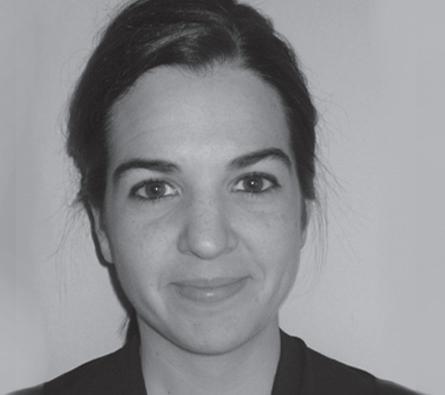
多発性老化:家庭環境を通じた医療の 明確化
寿命は著しく伸びたものの、高齢化には不均一な健 康プロファイルと慢性疾患がつきものです。コロナ 禍のステイホーム中、全世界ではガンやその他の併 存疾患の病歴を持つ高齢者の増加が予想され、健 康転帰への居住空間の潜在的な寄与が望まれ、ま た、この老齢化に伴う罹患率の高まりにより、さらな る医療インフラとリソースが求められます。居住施 設について、公衆衛生プログラム、プライマリーケア や地域密着型の外来患者リハビリテーションサー ビスの基本的なヘルスケア要素として認識されるこ とが増えてきています。
家庭環境の品質変数への累積的な曝露は、低悪性 度の全身慢性炎症の元となる生理現象を促進さ せ、最終的には回復ホメオスタシスや無数の慢性疾 患の病因と進行のいずれかに寄与する可能性があ ります。臨床バイオマーカー研究は、炎症性メディエ ーターの循環レベルが加齢とともに増加し、代謝因 子、免疫機能障害、微生物のディスバイオシス、神経 細胞の問題など病理学的メカニズムにより炎症が 起こると示す一方、住宅施設の設計、環境衛生、慢 性状態の統合生理学の間に存在する多因子的かつ 複雑な相互作用は見過ごされます。この新たな分野 をさらに追求すれば高齢者介護における多発性疾 患のための医療サービスを提供する支援住宅プロ グラムの変革を進める事ができます。
Tongji Architectural Design (Group) Co., Ltd. (TJAD)
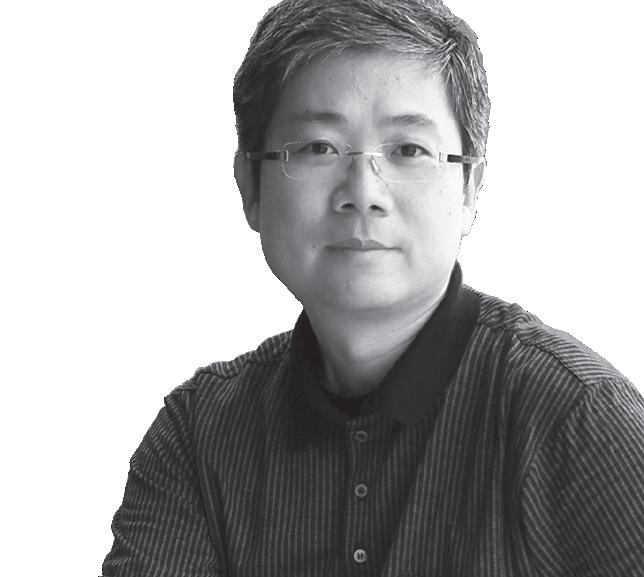
In China's first-tier cities such as Shanghai and Beijing, hospital architecture design needs to cope with the urban renovation and the urban expansion at the same time. In our projects, led by the smart hospital design development, large comprehensive hospitals are downsized, specialized and more elderly friendly.
An independent new small-scale Geriatric Medical Center Building was built in the Shanghai First People's Hospital Reconstruction and Expansion Project. Compared to other sectors which all locate within the city block, this integrated center has the most convenient access to public transportation. The center belongs to the entire hospital but can work with its own schedule.
The new Shanghai Traditional Chinese Medicine Hospital is located in Jiading which is one of the five major satellite cities of Shanghai. Traditional Chinese medicine has curative effects on chronic diseases and intractable diseases of the elderly. The design emphasizes the humanized interior and exterior spaces, creating a slowpaced healing environment, which realized the transformation from a treatment-centered hospital to a health improvement-centered hospital for the aged.
The masterplan of Shanghai Jing'an Elderly Health Center brings together the outpatient of Shanghai Traditional Chinese Medicine Hospital, Shanghai Fourth Rehabilitation Hospital, and the Jing'an District Nursing Home. The new building provides one-stop services through resources sharing among these three professional elderly treatment institutions.
中国のスマートな病院設計開発
上海や北京などの中国の大都市での病院の建築設 計では、都市の改修と拡大を同時に行う必要があり ます。私達のプロジェクトでは、スマートな病院設計 開発を進め、大規模な総合病院を縮小・特殊化し、 より高齢者に優しいものにしています。
上海第一病院(Shanghai First People's Hospital Reconstruction)と拡張プロジェクトでは、独立し た小規模な老人医療センタービルを新たに建設しま した。街の区内にあるすべての他のセクターと比較し て、この統合センターは公共交通機関へのアクセス が最も便利です。センターは病院全体に属しています が、独自のスケジュールで業務することが可能です。
新しい上海漢方病院(Shanghai Traditional Chinese Medicine Hospital)は上海の主要な5 衛星都市の1つの嘉定区にあります。漢方薬には、高 齢者の慢性疾患や難病の治療効果があります。人間 味あふれる内外空間を重視したデザインにより、ス ローな癒しの環境を演出し、治療中心の病院から健 康増進中心の高齢者のための病院になりました。
マスタープランでは、上海静安高齢者健康センター (Shanghai Jing'an Elderly Health Center) に、上海伝統中国医学病院(Shanghai Traditional Chinese Medicine Hospital)、上海第4リハビリテ ーション病院(Shanghai Fourth Rehabilitation Hospital)、静安区ナーシングホーム(Jing'an District Nursing Home)の外来患者を集めます。 新しく建築したビルで、これら3つの専門的な高齢者 治療機関でリソースを共有し、ワンストップサービス を提供します。
Architectural Project Manager, Architect,
Synthesis Architect and Wellbeing Ltd, Greece
建築プロジェクトマネージャ―、建築家 (ギリシャ)
During my university years studying architecture, I was with my mother the sole carers of my grandparents: my grandmother had dementia and Parkinson’s and my grandfather Alzheimer’s. It was a thorny path from the beginning till the end, influencing the lives, characters, family links and social interactions of all people involved in this equation. ‘Living’ ageing in a quite young age, gives you a new perspective on the matter. You begin to feel - rather than being able to explain - how the built environment can impact simple everyday actions such as helping a person with Parkinson’s take a bath. This experience changed me and now, many years later and working as an architect, I can see things more clearly.
I understand the importance of designing by keeping in mind all user’s ages and needs, as not all of them are going to be young and healthy.
I understand that not all people have the same perception and this should be taken into account. I understand the great impact architecture can have on people’s lives and the tools the profession can use to support autonomy and dignity while ageing.
I know that we were never taught any of these during my studies at architectural school but we should, and I know no one stays 20 forever and we are all going to age eventually, if we are lucky. So, please design properly!
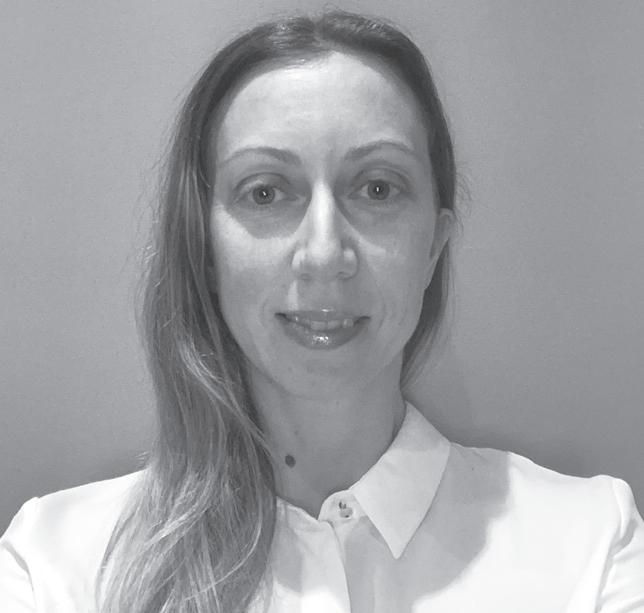
大学で建築の勉強していた頃、私と母だけで祖父母 を介護していました。祖母は認知症とパーキンソン 病を、祖父はアルツハイマーを患っていました。最初 から最後まで大変な道のりで、関係するすべての人 々の生活、性格、家族とのつながり、社会的関わりに 影響しました。かなり若い時期に「老化の生々しい 過程」を経験すると、問題についての新しい見方が できるようになります。パーキンソン病患者の入浴 を手伝うなど、構築環境が単純な日常の行動にどの ような影響を与えるのか説明できるようになる、と いうより、それを生身で感じとれるようになります。 この経験で私は変わりました。数年後建築家として 働くようになった今、物事をよりはっきりと見ること ができるようになりました。
全員が若かったり健康であるとは限らないので、全 ユーザーの年齢とニーズを念頭に置いて設計すると いうことの重要性は理解しています。
全ての人が同じ認識を持っているわけではないことも わかっているので、これを考慮する必要があります。
高齢化するその人の自律性と威厳をサポートするた め、専門職が使用できるツールや人々の暮らしに、 建築様式は大きな影響を与えます。
建築学校でこのようなことは教わりませんでしたが、 とても必要だと感じています。そして、永遠に20歳の 人はいずれ私たちも高齢になります。ですので、適切 に設計してください!
IAFOR Publications
The International Academic Forum Sakae 1-16-16
Naka Ku, Nagoya
Aichi, Japan
IAFOR Publications ©2022 East Meets West: Perspectives on Ageing and the Physical Environment Issue 1
ISSN (Online): 2758-0121 ISSN (Print): 2758-0113
Editors:Joseph Haldane & Evangelia Chrysikou
